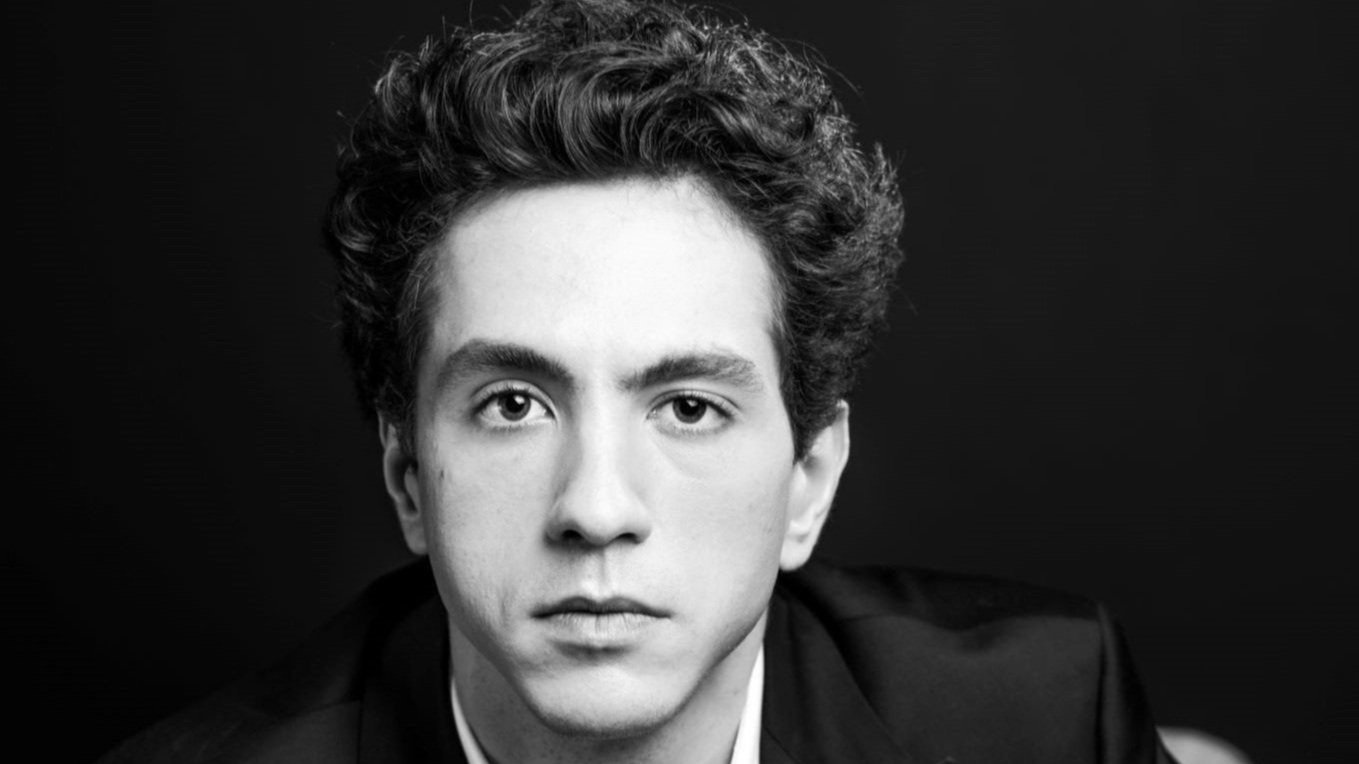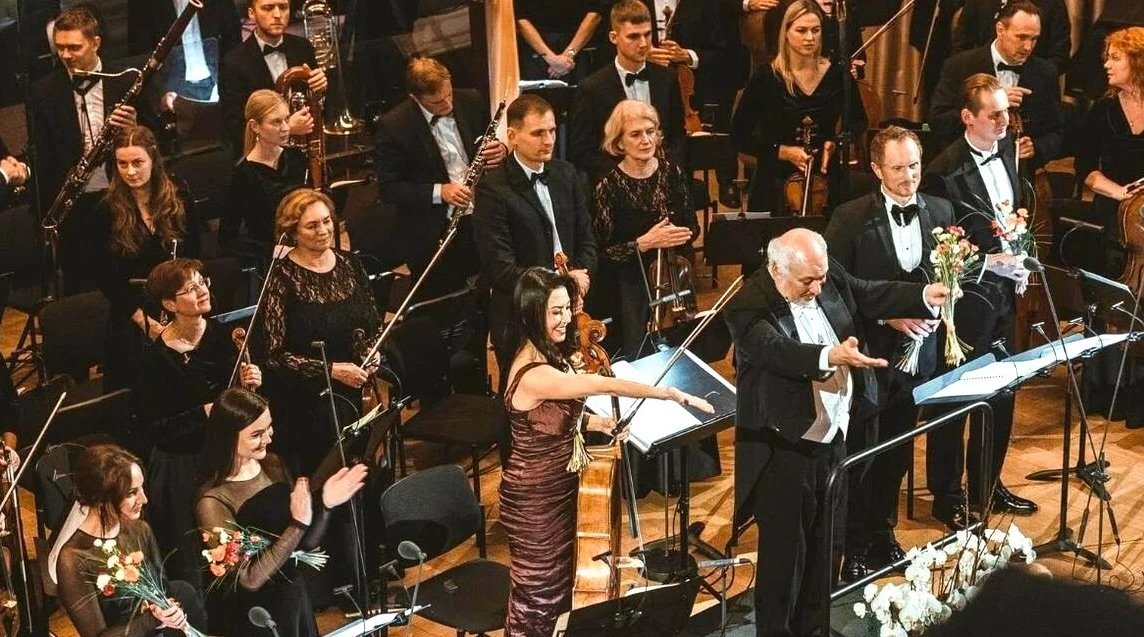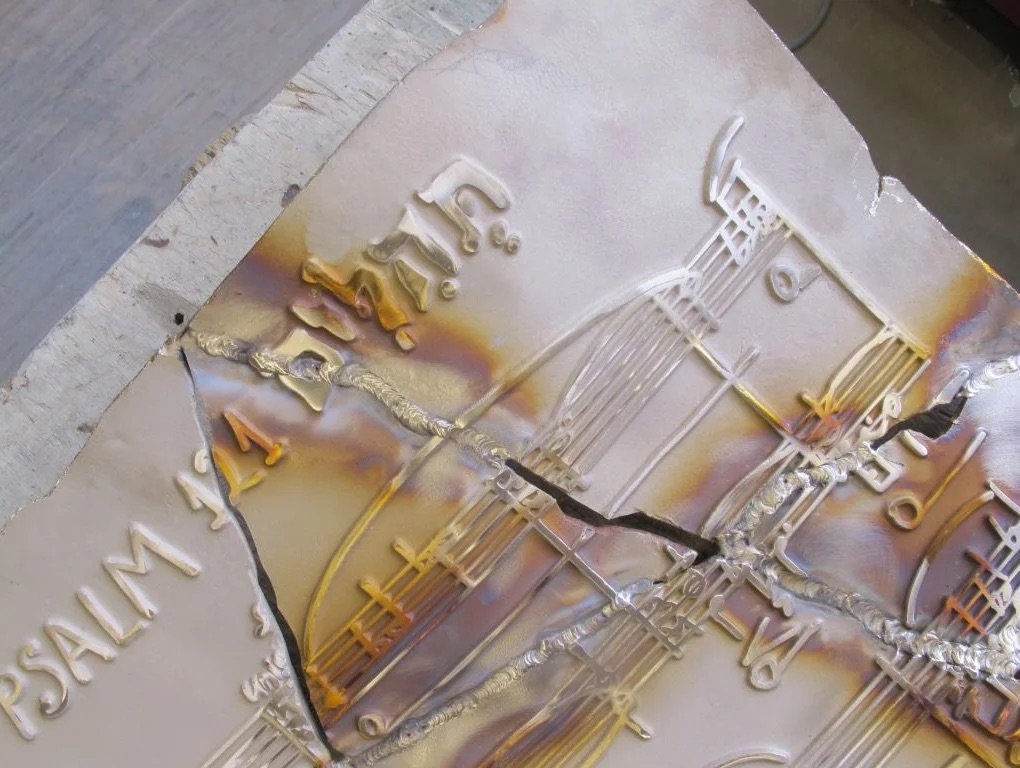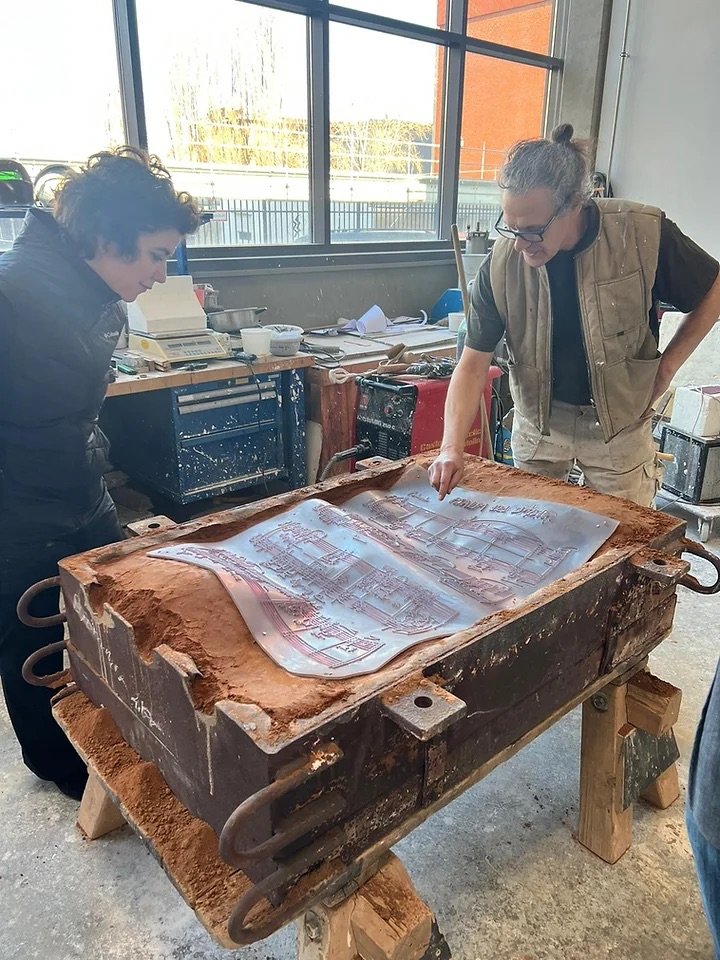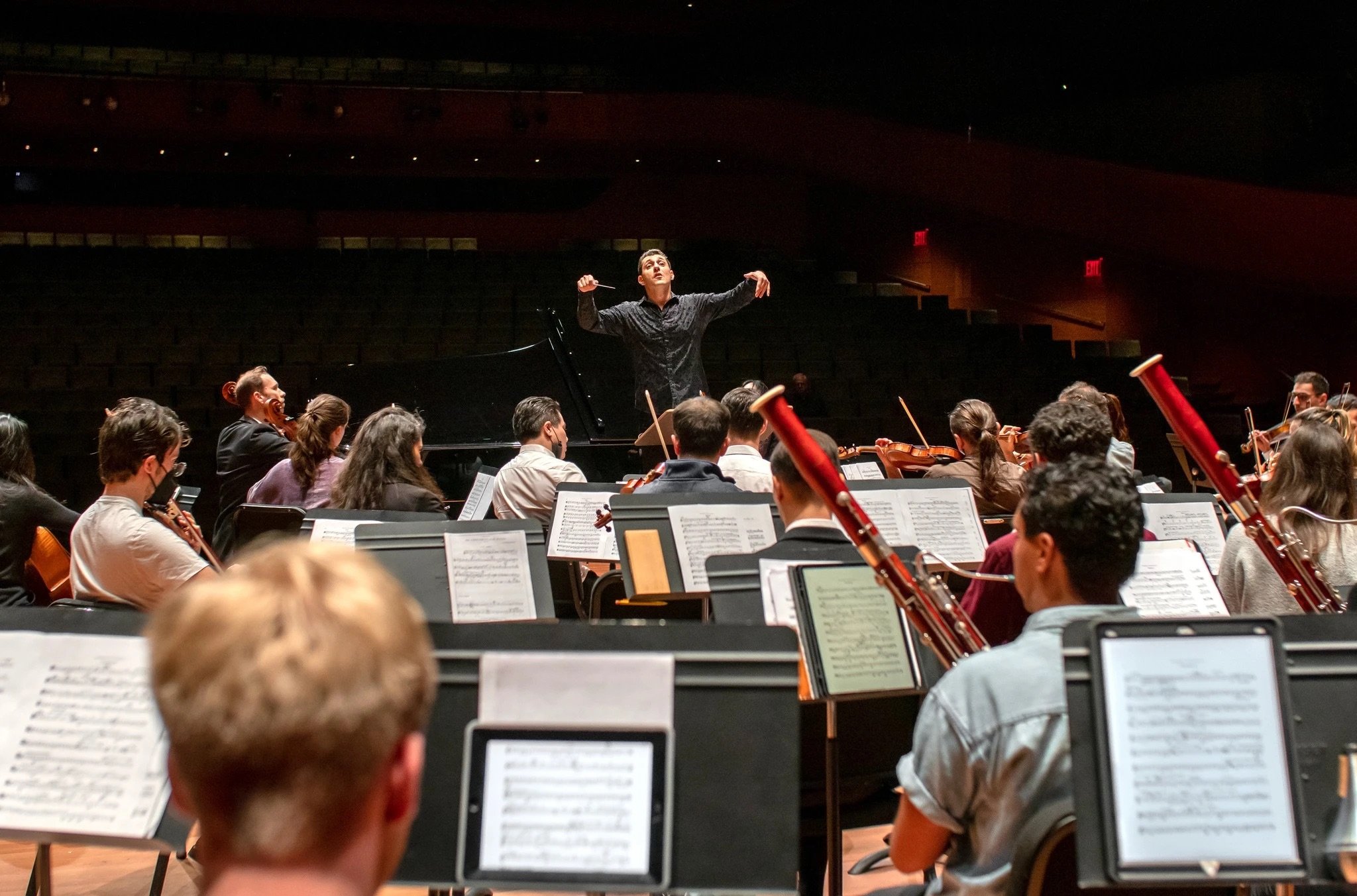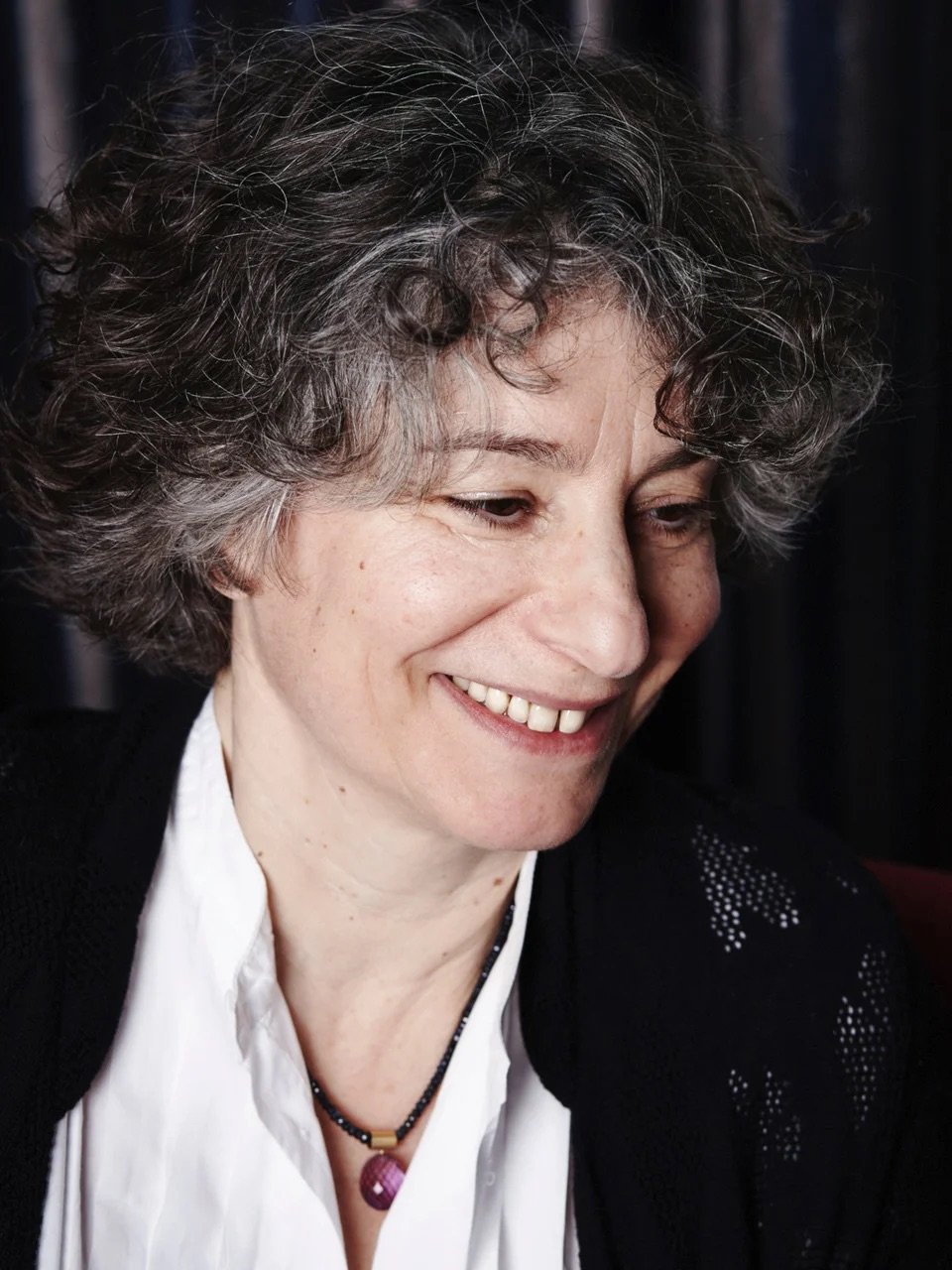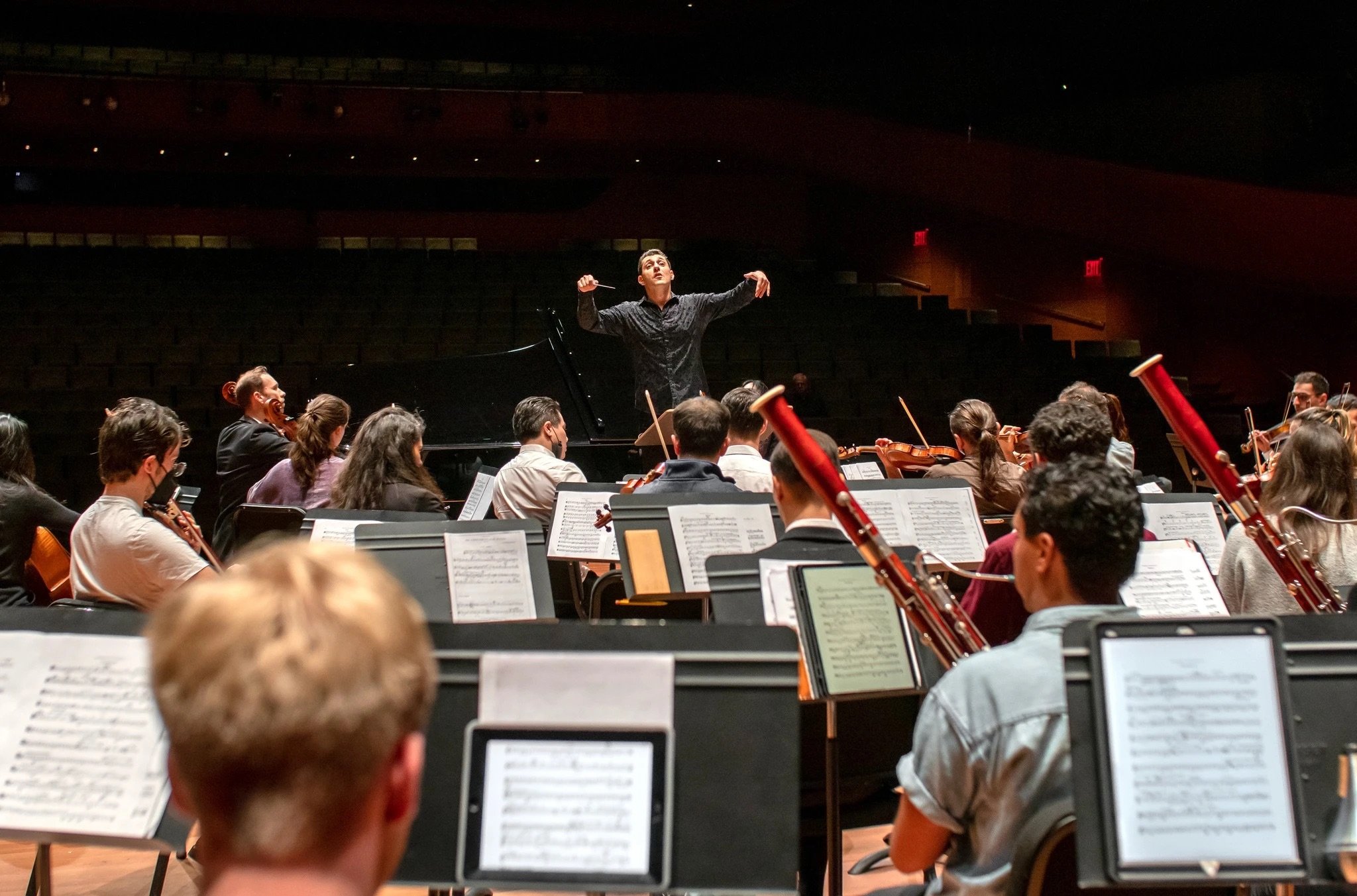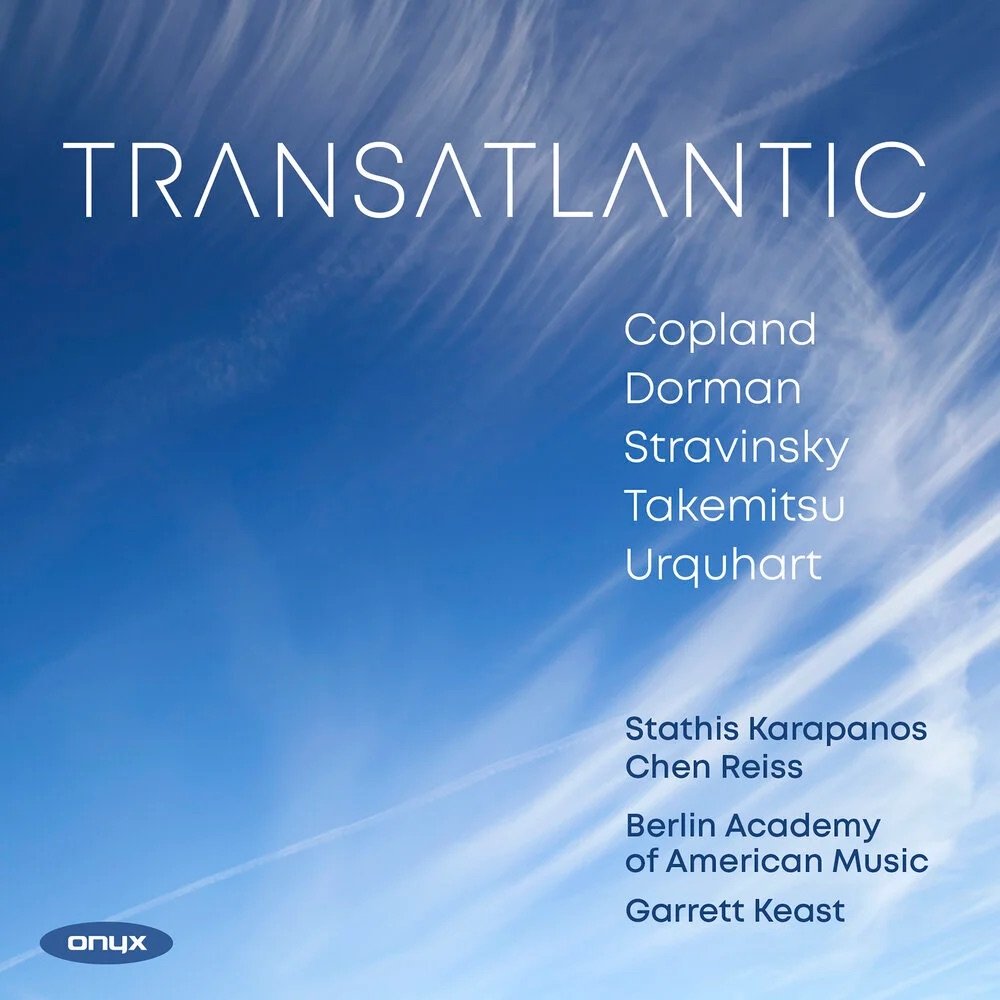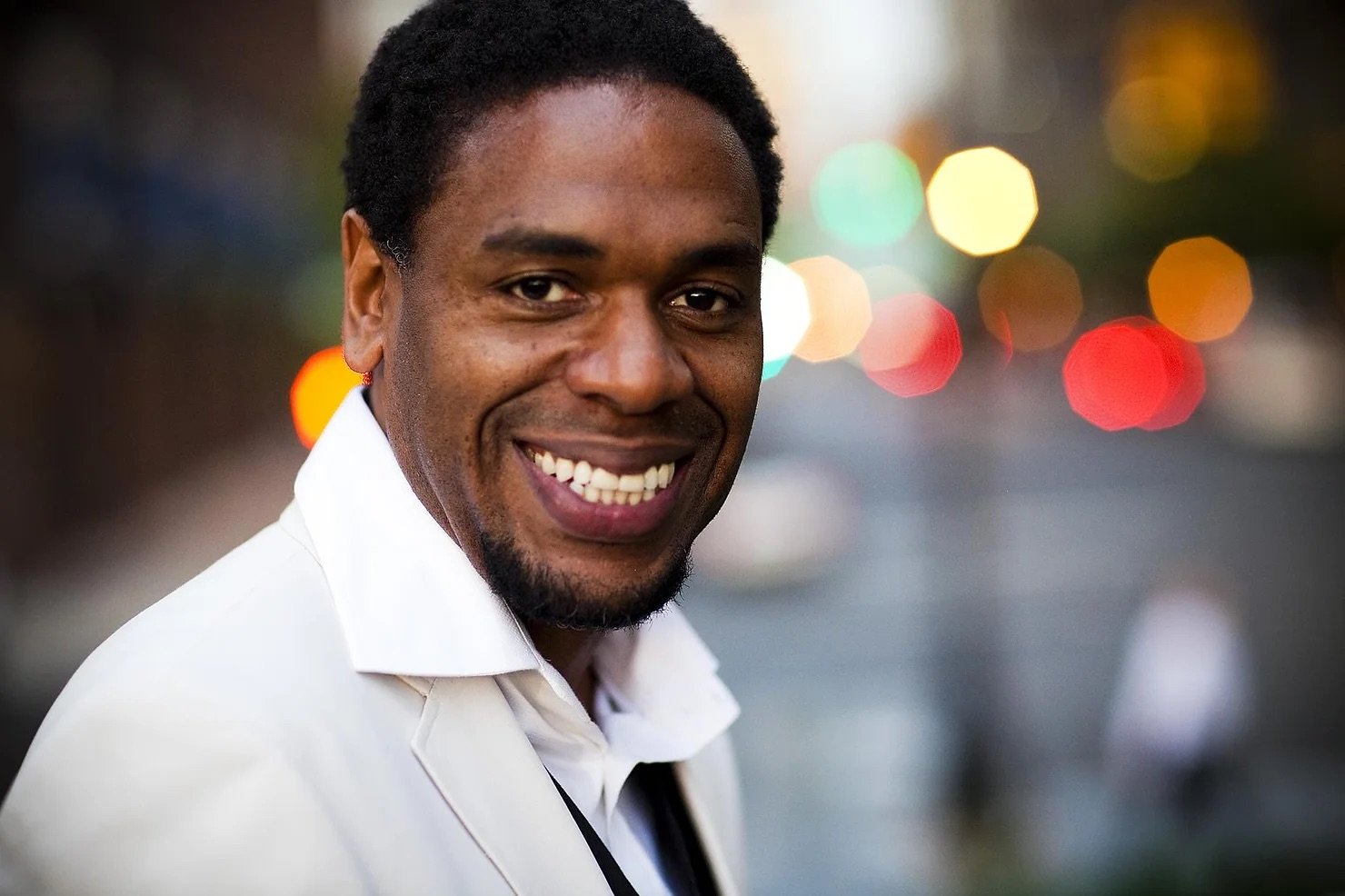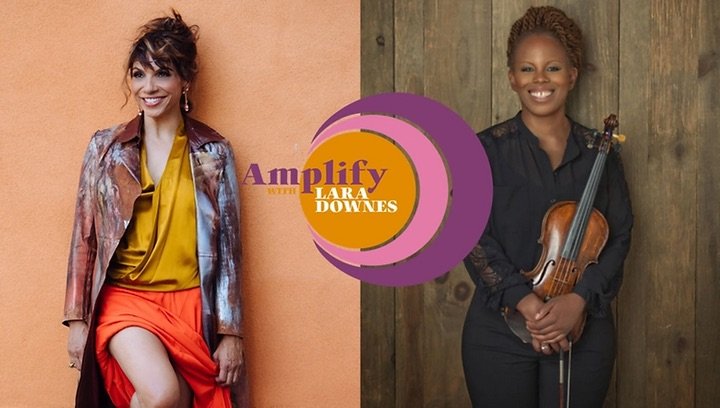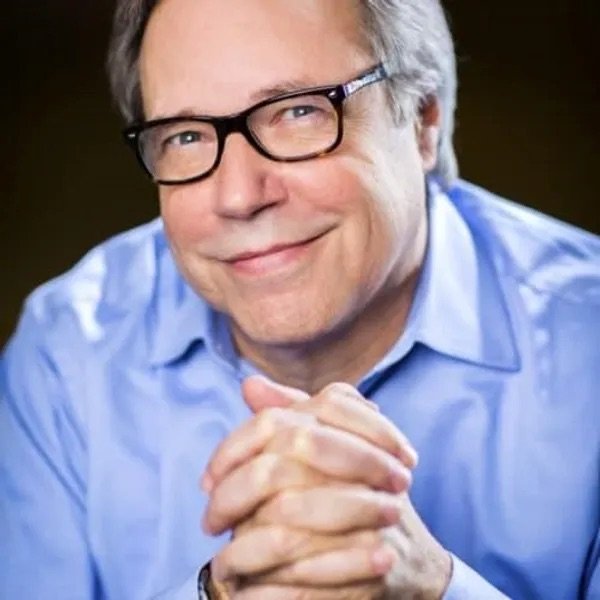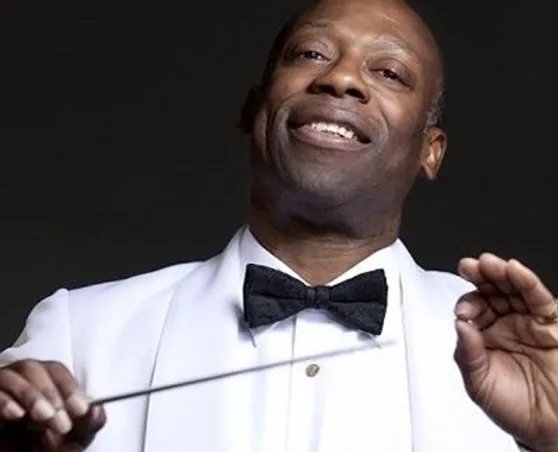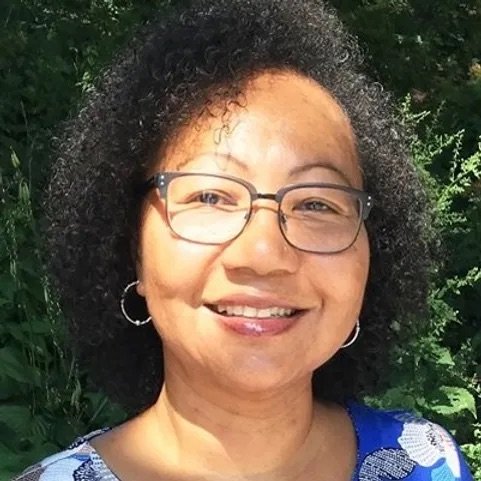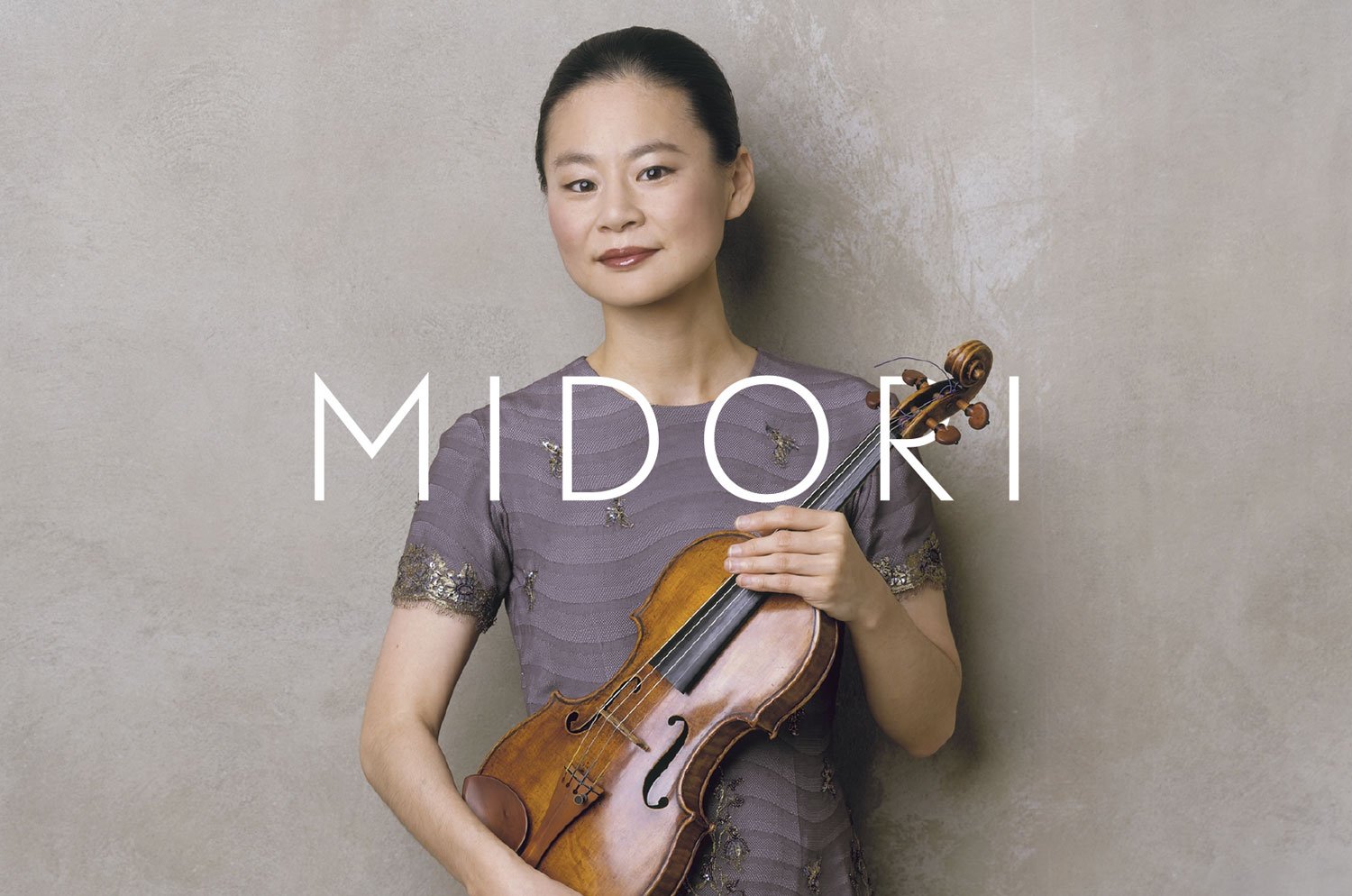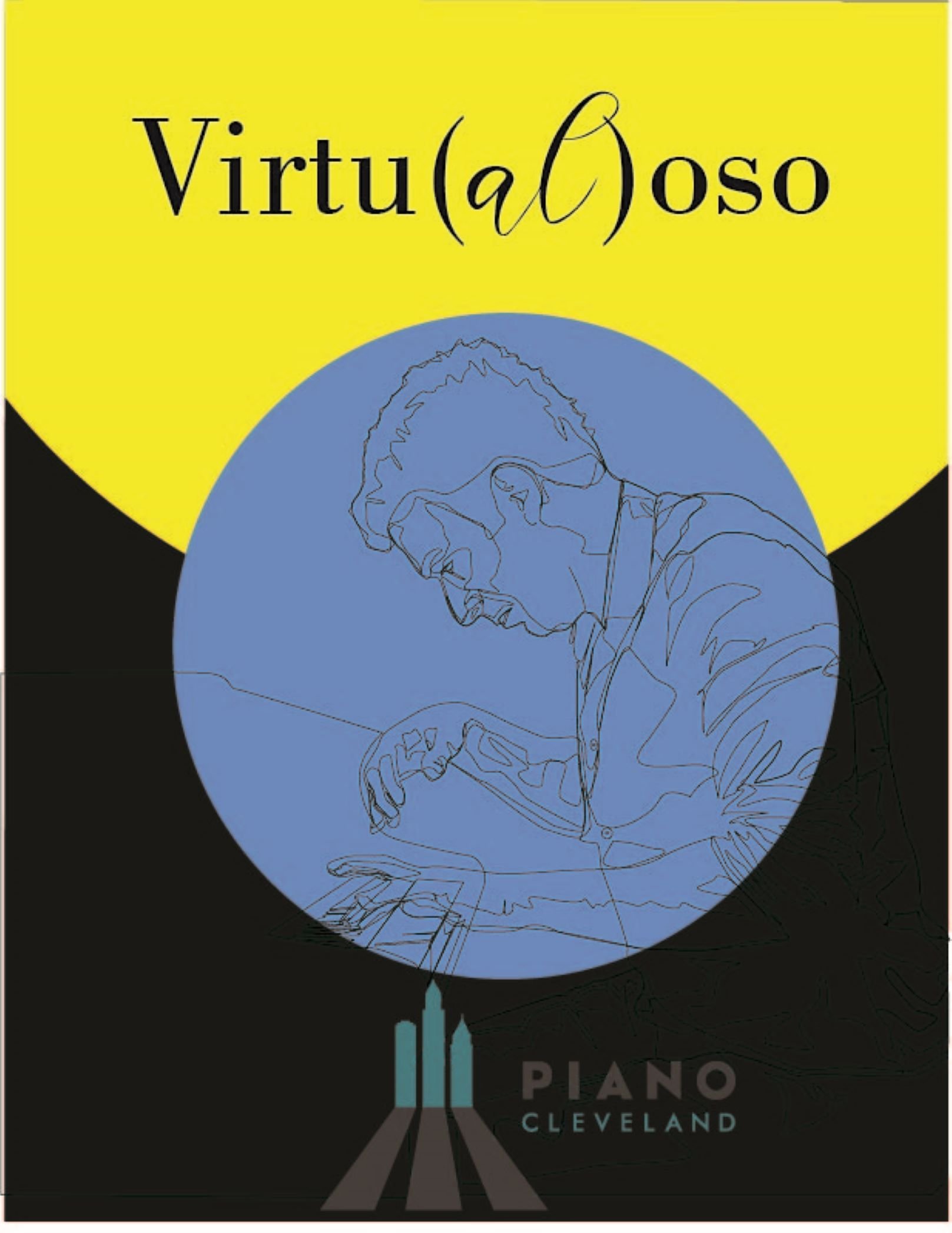Writing
Ilona’s writing spans the broad landscape of academic, publicist, creative, and business styles, helping to successfully position artists and arts institutions over a multitude of sectors within international markets.
Her entrepreneurial traction and long-standing involvement within the global arts industry allow her to dive into the creative process of each consultee, contextualizing the complex nature of their work with a clear message.
-

Consultancy
Ilona's expertise as a business owner, journalist, and arts entrepreneur gives her a unique perspective on arts and education programming, fundraising, production, audience engagement, cultural diplomacy, and public affairs. Her clients benefit from her in-depth understanding of informed and novice audiences via custom-developed GTM and audience engagement/outreach strategies. Bilingual strategic and operational consultancy is available in English and German, enabling writing commissions upon request.
-

Commissions
Startups, institutional establishments and artists often commission texts to assure clear and direct communication of their vision. Advisory results in various artifacts, such as: statements, press-releases, proposals, speeches and scripts to be utilized by the commissioner.
-

Articles
With an interdisciplinary vision toward visual and performing arts, she has published hundreds of articles and artist profiles for Naxos Deutschland, PianoNews, Listen Magazine, and Chamber Music Today, among many others. She continues spotlighting artists and arts initiatives, helping them accurately voice their vision and gain exposure within diverse communities.
Transmutations: Between Fragility and Permeance
Make it stand out
Whatever it is, the way you tell your story online can make all the difference.
Exhibition of Lera Auerbach’s Bronze Sculptures at the AMARE Den Haag
In the upcoming AMARE exhibition, Lera Auerbach's diverse bronze sculptures from Vienna, Berlin, Miami, and New York are showcased for the first time together. Within Auerbach's kaleidoscopic art universe, a dance between contrasts and consonance unfolds, where intellect and emotion intertwine. Her sculptures, untouched by the norms of formal academia, emerge from an intuitive core. Driven by her life experiences, Auerbach's work reached a turning point in 2009 when a devastating fire consumed her New York studio. Destroying her library, manuscripts, personal items, and art collection, the catastrophe became an unexpected catalyst. Rising from the ashes, she found a cathartic outlet for her intense emotional state in sculpting. With its curatorial arch that spans her music, visual art, and literary creations, the festival seeks to explore the multifarious nature of Auerbach’s oeuvre across artistic disciplines.
Auerbach's sculptural universe is, in essence, an intricate tapestry that weaves together diverse threads: personal history, emotional intensity, material dialectics, social commentary, and intellectual depth. The result is an evocative narrative that engages in an ongoing internal dialogue, linking the past to the present, the personal to the universal, and the abstract to the tangible. This dynamic interplay across her body of work marks Auerbach as a unique voice in the contemporary art world. This voice is as compelling as it is complex and as relevant as it is timeless.
The exhibition opens on Friday, Oct 13, 2023, at 17:00, featuring the unveiling ceremony of a new bronze sculpture, “Silent Psalm”. The show will remain on display throughout the Lera Auerbach festival program at AMARE Den Haag until October 23, 2023.
Get the entire program here.
See a catalog of her sculptures here.
Watch the video here.
Artist Spotlight - Pianist Konstantin Emelyanov
Photo Credit: Olympia Orlova
Lauded as the “gem of the 16th International Tchaikovsky Competition in 2019,” third-prize laureate Konstantin Emelyanov received the title “Artist of Radio Russia” and the Audience Award of Time-Life Magazine, which applauded his “remarkably clever program, unconventional choice of works, and harmonious interpretations, where technical stability is no obstacle to unconcealed emotions, temperament is curbed by thought, and the intuitive sense of style maintains a perfect balance between the performer’s vision and the author’s will in every piece.”
The 3rd International Competition of Polish Music
Six finalists in both categories (Piano and Chamber Music) competed for monetary prizes (with a first prize of 20,000 euros) and subsequent performance opportunities.
The real winners, though, are Poland’s lesser-known composers from the 19th and 20th Centuries. A broad and varied compilation of around sixty composers’ works offered a vast number of repertoire choices from the national collection.
It is not easy to identify what makes Polish music Polish. Given the wide-ranging aesthetic differences between the pieces, one may be hard-pressed to define the binding elements based on the use of Polish folkloristic motifs alone.
What gives Polish music its cohesive thread when many of the pieces were written when there was no Polish state, and others were composed by refugees who never returned to their country of origin? These works include – to a large extent – many of Poland’s Jewish composers, who widely contributed to the country’s music history.
Rather than providing conclusive answers to what elements constitute the music’s connective tissue, the competition offers contestants and audiences alike an in-depth exploration of these works in the hope of leading to their re-discovery.
Recently returning from Rzeszow, Poland, I am excited to share my impressions of the competition’s highlights. What made this competition special was its repertoire focused exclusively on the works of Polish composers from the 19th and 20th centuries - excluding most works of Chopin - the country’s icon of classical music. Read the article on Polish Music’s best-kept secrets, published on Classical Post here.
Emmy Rubensohn – A Cultural History of Arts Patronage amidst Persecution and Emigration
The exhibit goes beyond the 2021 presentation at the Leipzig Gewandhaus, titled: "Curtain Up for Emmy Rubensohn - music patron from Leipzig," which was cut short due to the pandemic. It has been expanded with new documents and artifacts and is now displayed alongside and in the context of the GRASSI museums' collections. It offers an extensive compilation of photos and personal correspondence accompanying Rubensohn's narrative during her life's passage through the end of the German Kaiser Reich, the Weimar Republic, Nazi persecution, her emigration to Shanghai, and then New York.
Curated by the musicologist Prof. Dr. Matthias Henke and the art historian Rachel Stern of the Fritz Ascher Society for Persecuted, Ostracized, and Banned Art in New York, the exhibition is organized by the GRASSI Museum für Völkerkunde, the GRASSI Museum für Musikinstrumente, and The Fritz Ascher Society.
The exhibition's poster is based on Emmy Rubensohn's wedding photo, the only existing photo of her. (Collection Otto Rubensohn, Jüdisches Museum Berlin, Gifted by Fortunatus Schnyder-Rubensohn. Seen in front of the Market Place from 1890 (Marktplatz) in Weimar.
Research Study: Outsourcing as an institutionalization tactic for an international non-for-profit initiative in the post-pandemic world.
TACL (Turkish-American Cultural Laboratory) is a nonprofit arts organization that provides a platform for Turkish and American artists to collaborate in three main ways: performance (live events), education (masterclasses, workshops, academic exchange programs), and production (recording and commissioning new works). The initiative was launched in 2017 by Zeynep Alpan (violinist) and Mark Prihodko (cellist), two New York-based Juilliard graduates who identified a gap in cultural exchange opportunities between Turkey and the United States. During its two pilot years (2017-2019), TACL successfully met its ambitious entrepreneurial goals in Turkey.
However, since its incorporation in the U.S., in 2019, until the start of the pandemic, TACL managed to identify and contact potential New York partners but failed to implement any of its programs, as demanded by its mission.
Based on my initial phase of interviews with TACL’s founders, I understood it was their belief that there was simply not enough time before the onset of the pandemic to realize their U.S.-based pitches fully. During the more critical evaluation phase, it became increasingly clear that the pandemic was by no means their only challenge in the much more competitive New York art market. It offered less of an identified target audience and fewer direct stakeholders interested in the bi-national exchange, which could be considered for potential partnerships and meant fewer funding opportunities.
Solving TACL’s lack of presence in the U.S. provided the consultancy’s objective: to find a sustainable solution to implement TACL’s programs within the competitive NYC arts and cultural marketplace. We mutually agreed that my focus on TACL’s NYC live concert performances would create the necessary exposure for TACL’s artists and the organization. During the analytical phase, it became evident that any potential New York partnership would compensate for TACL’s weaknesses and seek to align its strengths in search of artistic programming and reputational position. The most successful, mission-aligned partnerships could attract and strengthen similar target audiences, deepening TACL’s impact while generating greater sustainability. Such a partnership would provide the organizational, administrative, and funding structure necessary to implement TACL’s cycle of season-long programs that would propel its sustainable presence in New York.
TACL’s previous operating modus and small team size also presented a vital challenge. TACL’s founders expended time, resources, and effort on each new programming opportunity instead of instituting a sustainable workflow and infrastructure. During our weekly meetings, it became increasingly clear that an essential step towards establishing TACL’s presence in New York would be finding a venue to present TACL’s extensive artist network. Given TACL’s small size and very limited resources, that would require identifying a mission-focused partnership willing to support TACL’s direct artist-to-artist programming.
Utilizing an application from the tech industry, the customized workflow maps up the process of concert production, indicating the outsourcing strategy used to maximize TACL’s creative output.
To develop an even more comprehensive understanding of the processes involved in concert production in the NYC space, I devised a questionnaire directed to eight New York City concert industry leaders, including acclaimed presenters such as Carnegie Hall, 92nd Street Y, and People’s Symphony Concerts.
Competitive analysis of viable candidates for a strategic partnership identified the newly built Turkish House in New York. With its public spaces owned and managed by the Turkish Consulate, it holds the residence of the Turkish Mission to the UN and offices of the Turkish Consulate, features a new auditorium and gallery, and has a declared interest in Turkish artists that complement TACL’s mission.
Artistic autonomy is paramount to TACL’s mission. Anything that would infringe on TACL’S unique selling point–its “artist-to-artist” approach to programming–or politically hinder its artists’ freedom of expression would threaten its integrity. A conducted SWOT Analysis indicated that to avoid the risk that outsourcing could pose to TACL’s excellent reputation and artistic self-determination, TACL must preserve exclusive control over its programming. To this end, a Deal Memo for a cross-marketing partnership with Turkish House underlines the areas of responsibility. While both partners must sign off on its co-produced events, it sets clear parameters that allow TACL to maintain substantial creative control.
Given Turkey’s authoritarian regime's politics, it is unclear whether the mission will agree to that fundamental condition. TACL has had no conflicts with the government in Ankara during its years of programming in Turkey. And it has a good standing relationship with the Turkish Consulate in New York and its Deputy Consul Emre Manav. In September 2021, TACL’s founders co-produced the opening ceremony of Turkish House, consulting on the event’s artistic programming and general logistics. As a result, it is likely to enter direct negotiations from a position of strength.
Finally, the paper discusses my recommendations, their potential impact, and limitations, adding personal observations about the challenges of this consultancy and the process in general. Inspired by the broad literature on entrepreneurship in the arts, I acknowledge that arts and culture organizations could profit more from other industries’ tools for their organizational assessment and operational alignment. While my recommendations follow the industry’s standard models, the research-determined combination applied to TACL’s partnership with Turkish House provides both a creative and transformative solution, as acknowledged by TACL’s leadership team.
The Art of Breakage and Repair — Lera Auerbach’s new symphony
On April 19th, Lera Auerbach’s Symphony No. 6, Vessels of Light, the composer’s monumental work for violoncello, choir, and orchestra, receives its U.S. premiere at Carnegie Hall. Commissioned by Yad Vashem, the World Holocaust Remembrance Center in Jerusalem, it honors Japanese diplomat Chiune Sugihara, who saved thousands of lives during the Holocaust.
On April 19th, Lera Auerbach’s Symphony No. 6, Vessels of Light, the composer’s monumental work for violoncello, choir, and orchestra, receives its U.S. premiere at Carnegie Hall. Commissioned by Yad Vashem, the World Holocaust Remembrance Center in Jerusalem, it honors Japanese diplomat Chiune Sugihara, who saved thousands of lives during the Holocaust.
For cellist Kristina Reiko Cooper, the event marks an exciting moment of reflection on her essential role in the work’s production and the many aspects of her life coming full circle.
(Photo Credit: Alon Shafransky)
Coming from the classical genre with a passion for the contemporary idiom, she recently performed as the symphony’s cello soloist, at its world premiere in Kaunas, Lithuania, in October, and at its Czech premiere in Prague in March. Performing alongside her was the large orchestral ensemble, a choir, additional male and female solo singers — and poetic whisperers. Cooper will continue performing the symphony’s premieres during its first two years, worldwide.
(Photo Credit: Lina Matuleviciene, from the Premiere in Kaunas, with the Kaunas Symphony Orchestra and Constantine Orbelian, who will also conduct the Carnegie Premiere)
Not long after Cooper met her husband, converted to Judaism, and moved to Israel, she learned about the heroic acts of the Japanese diplomat Chiune Sugihara (1900-1986), who defied orders as the vice-consul of Japan in Kaunas, Lithuania, during World War II, by "passing" so-called transit visas - issued by the Dutch Consul, Jan Zwartendijk - through Japanese territory to persecuted Jews fleeing Europe.
“These actions saved thousands of lives, including that of my husband’s father, Irving Rosen, says Cooper. “I am half-Japanese and understand Japanese culture as part of my DNA. There certainly is an element of obedience ingrained in the Japanese tradition, but simultaneously, the culture also connects to the ethical code of the Japanese Samurai warriors. The so-called Bushido Code, in essence, describes the moral obligation to do the right thing, even at great personal risk and in times of peril.”
(Photo: Chiune Sugihara, Yad Vashem Archives)
Shortly before his death, Sugihara got included by Yad Vashem, the World Holocaust Remembrance Center in Jerusalem, as one of the Righteous among Nations, non-Jews from various places and walks of life, who risked their lives to help save their Jewish neighbors.
Immersing herself in the study of the Jewish tradition, which became an integral part of her life, Cooper also became familiar with the meaning of the Hebrew concept of Tikkun Olam, the repair of the world, as a shared societal responsibility of each individual person. An active member of diverse charitable organizations, including the Israel-America Cultural Foundation, she seeks to live up to this merit.
With her husband’s family’s heritage so closely connected to Sugihara’s heroism, Cooper was eager to tell his story – one marked by war, loss, and breakage but also bravery and repair. As a cellist, she also wanted to find a way to connect her two distinct cultural identities within the realm of music. Cooper reached out to Yad Vashem and its affiliated group, the American Society of Yad Vashem, to initiate a collaboration.
She had spent her formative years as a musician at Juilliard, receiving her BA., MA., and Doctorate degrees. There she befriended her former classmate Lera Auerbach, the Jewish, Soviet-born multi-dimensional artist and one of today’s leading female composers. Reconnecting with Auerbach, Cooper saw in her friend a brilliant voice to convey her message artistically, and Yad Vashem, with the support of its American Society, agreed to commission Auerbach to write a piece memorializing Sugihara.
(Photo Credit: Raniero Tazzi – Lera Auerbach)
“Lera is, simply put, a genius,” she remarks during our interview by phone from Tel Aviv, where she resideswith her husband, the investment banker Len Rosen and their three young children. She is such an all-encompassing talent in whatever medium she works, whether as a conductor, pianist, composer, poet, or visual artist,” Cooper says.
As a conceptual artist, Auerbach often pushes the boundaries of the medium she works in. This has beenthe case with her symphony Vessels of Light and her sculpture Silent Psalm, companion pieces born out ofthe same vision.
The two works merge the Hebrew concept of Tikkun Olam (the repairing the world) with Kintsugi, the Japanese craft technique also known as Kintsukuroi (Golden Repair), in which the artist breaks pottery and repairs the pieces using gold-dusted glue. This illuminates the scars of breakage instead of masking them,thereby enhancing the beauty and uniqueness of the object.
The symphony borrows from Kintsugi, interlacing the melodic lines of the cello with – at times whispered –choral recitations of fragmented Yiddish poems. As a tribute to the language, which lost so many people who spoke it, Auerbach chose Yiddish texts by Yisroel Emyot, Dovid Hofshteyn, Simkha-BunimShayevitch, Peretz Markish, Avrom Sutzkever, Itzik Manger, Reyzl Zhiklinksi, and Moyshe Teyf. These were transliterated for Auerbach by star pianist and Yiddish poetry recitalist Evgeny Kissin and the former Editor of the Yiddish Forward, Boris Sandler. Like the golden glue of Kintsugi, the cello lines metaphoricallyrepair the broken stanzas of the poems of the libretto (The choir’s score).
As Auerbach explains, Psalm 121 of David is the song of Ascents — “I lift my eyes to the mountains. Wheredoes my help come from?” — is the vessel she shatters in her symphony. Its words appear as text in the libretto but are not sung aloud. Instead, they exist only as an internal meditation, remaining silent as a metaphor for the Holocaust— the unspeakable, fragmented, and in shards.
Kintsugi takes a more literal form in Auerbach’s sculpture Silent Psalm. There, cast in bronze, underneath its Hebrew inscription is the musical notation of the melody she composed for Psalm 121 of David, missing from the symphony. Broken into chards and repaired with Kintsugi, the sculpture’s exposed cracksare filled with a patinaed golden thread in the shape of a Magen David (Star of David) appears.
Auerbach describes her creative process: "Like with the mold of the sculpture, after completing the Psalm,I shattered it; its fragmented musical material in the symphony – without words – appears in the interludes, with the solo cello in a binding embrace that holds the different parts together, making them more robust and creating a sense of unity."
(Photo Credit: Rafael DeStella at Noack Foundry, Lera Auerbach during the preparatory work for her sculpture “Silent Psalm”)
Both the symphony and the sculpture represent the narrative arc that binds the suffering and survival of the Jewish people scattered across the world, who astonishingly remain multiculturally united. It also speaks to a universal theme, revealing the human condition as a moral quest for beauty and repair, even amidst destruction and violence.
Cooper realized an expansive vision for this project. She also captured that vision in a documentary film titled “A Symphony for Sugihara,” produced by Mark Wahlberg. Soon to be released, the film will follow Cooper behind the scenes and capture her tireless efforts to immortalize Sugihara’s legacy through the international performances of Auerbach’s symphony.
“In her ingenious work, Auerbach musically interweaves the Jewish soul through every note and gesture. Telling the harrowing story of the Holocaust, including that of my family’s heritage,reflects profoundly on my life. I was thrilled to become a founding part of the dissemination of such a great work, which, thanks to all the wonderful people involved, has truly gained a significant, global dimension,” she says, crediting, amongst many others, renowned artistmanager Edna Landau, as a unique source of advice.
“I am hopeful it will continue to provide meaningful opportunities to bring out its message,” says Cooper. That message is unambiguous for her: “Our current world, most unfortunately, is lacking in compassion. With all the chaos, strife, displacement of refugees, war, totalitarian uprisings, racism, renewed anti-Semitism, anti-Asian hate, and hate in general, Sugihara's message is simple — and it can change the world. Of course, the circumstances may be complicated, and parsing through the "noise" may take a kind of focus that we have a hard time bringing forth these days — but doing the right thing? Knowing what is right or wrong? That is usually pretty simple. We all need to tune out the noise and access our moral center, and as Sugihara did, do the right thing.”
Nicolas Namoradze featured in Pegasus’ season finale
"This concert presents a fascinating program that examines many facets of both composers' perspectives and personalities. It is not often that one finds a conductor and orchestra so invested in championing neglected works and presenting such a program—I'm genuinely excited to go on this adventure with Karen and Pegasus, and we hope to make a compelling case for this music for the listener," says soloist Nicolas Namoradze about the upcoming concert.
"This concert presents a fascinating program that examines many facets of both composers' perspectives and personalities. It is not often that one finds a conductor and orchestra so invested in championing neglected works and presenting such a program—I'm genuinely excited to go on this adventure with Karen and Pegasus, and we hope to make a compelling case for this music for the listener," - says soloist Nicolas Namoradze about the upcoming concert.
Merkin Hall - Friday | May 5, 2023, | 8 pm – Tickets
Withstanding the tough times, even for longtime established Performing Arts Institutions, Pegasus: The Orchestra has successfully resurfaced New York's post-pandemic metropolitan music stages with its full 5th season. (Photo Credit: Emma Kazaryan) Pegasus: The Orchestra
Since its inauguration in 2017, under the visionary leadership of its founder, artistic director, and principal conductor, the American-Armenian pianist and conductor/composer Karen Hakobyan, the ensemble prides itself on its national diversity and the inclusive spirit of its international members.
The ensemble kicked off the season with its longtime planned and then pandemic-postponed All-Rachmaninoff Concerto performance at Alice Tully Hall in October, with three out of five solo piano parts presented in one sitting, going to female soloists. (The five performing pianists were: Fei Fei, Nadejda Vlaeva, Inna Faliks, Konstantin Soukhovetski, and Dominic Cheli. The above link leads to the ensembles' Rachmaninoff - Tutti from Piano Concerto No. 1)
The season ends on a high note with a performance at Merkin Hall: "This program is deeply personal for me, as it embodies what Pegasus is about, namely seeking meaningful connections between the pieces and composers and presenting them in a new light for the audiences. Exploring the different editions and ideas of the rarely-heard Scriabin Concerto together with Nicolas has been an extraordinary musical journey," says Hakobyan, and he adds: "The format of this evening is also quite unique as we, Pegasus, will play an overture to our fantastic soloist, Mozart's The Marriage of Figaro, before delving together into Scriabin's Piano Concerto in F sharp minor, Op.20, while he reciprocates in the second half with his arrangement for solo piano of the Adagio from Rachmaninoff's Symphony No. 2, Op.27, as a prelude to the orchestra's Mendelssohn's Symphony No. 4, in A major, the Italian."
To celebrate Scriabin's and Rachmaninoff's 150th anniversaries, Pegasus has invited pianist/composer Nicolas Namoradze, the 2018 Honens International Piano Competition winner.In the following interview, Namoradze offers some fascinating insights surrounding the original rendition of Scriabin's Piano Concerto in F sharp minor, Op.20, which listeners will witness during the performance, and some personal thoughts about his solo piano transcription of the Adagio of Rachmaninoff's Symphony No.2, Op.27.
(Photo Credit: Nathan Elson) Nicolas Namoradze
GetClassical: Although Rachmaninoff's and Scriabin's relationship has been described as an uneasy one, with very different styles, pianistic techniques, and philosophical outlooks on music and life – they must have still been significantly connected on a personal level. Born in the same year, both composers lived in Switzerland at the time of Scriabin's death, and Rachmaninoff was one of the pallbearers at his funeral in 1915. A sign of most tremendous respect, Rachmaninoff spent the following year performing only Scriabin's music, wanting to ensure it would not be forgotten. Do you experience this dedication in a musical context when comparing some elements in both composers' works?
Nicolas Namoradze: Yes, absolutely. They were good friends, as complex as their relationship might have been. Both composers were grounded in the same musical traditions. There are some key similarities in their musical idioms, such as their main models and influences (Chopin in particular) and their approach to sonority, polyphony, and texture on the keyboard. They also influenced each other's musical development. However, there are also significant differences in perspectives and temperaments, and Scriabin's musical language evolved more dramatically throughout his oeuvre than Rachmaninoff's. Indeed, the most important difference is likely the extent to which Scriabin embraced modernism, harmonically entering a very experimental realm by the time of his final works—something Rachmaninoff never quite followed.
GetClassical: What influenced the mutual choice of the composers' specific works?
Nicolas Namoradze: It seemed very appropriate for Karen and me to celebrate both anniversaries and the friendship of both composers with a work like Scriabin's Piano Concerto, which both composers championed. Scriabin performed the work many times—as did Rachmaninoff, especially in the year after Scriabin's death. Though the concerto is a relatively early work of Scriabin's, the piece reflects many stylistic characteristics that we associate with the composer's mature style.
In the decades after Scriabin's death, the work has faded into relative obscurity, and it's interesting to investigate why, especially as nearly all his performances of the work during his lifetime were very successful. An essential part of the puzzle here is that the concerto's premiere had a rather negative critical reception; however, his performances that came shortly after this did not.
For several reasons, it is almost certain that Scriabin significantly altered the piano part in response to the initial criticism. First, we know he was in the habit of doing this with virtually all his music in performance: his recordings prove that he did not follow his original score in many instances, changing not only expression markings but also the notes and textures, sometimes even cutting entire sections. There are many reports of those who heard Scriabin live—they note that the composer was almost always departing from his written scores. While Scriabin, unlike Rachmaninoff, never revised or edited his scores, we can infer that the dramatic improvement in the critical reception of the concerto must have been a result of these kinds of changes. Unfortunately, all we have from Scriabin today is the original version of the concerto, with no concrete indication of what exactly he must have tweaked.
GetClassical: With this fascinating music history of a somewhat obscure score in mind, perhaps comparable to Mozart'somitted writing of the cadenzas for his concertos, how does this relate to the performer's commitment to conveying Scriabin's true intentions?
Nicolas Namoradze: To be faithful to the composer's intentions in this case, one must be able to imagine what Scriabin would have changed in his concerto performances based on the evidence from other sources. His recordings and how they depart from the written page are good examples and templates; I use these to understand how he would have changed the tweaked score.
Thus, we do some detective work, resolving several questions in the score from perspectives he'd have had in mind. Doing this is essential because the piece has incredibly inspired musical material; it is a pity for the concerto to be neglected based on a couple of issues in the original score. Based on my research and understanding of his style as a pianist and composer, I try to make the most informed decisions possible. It is a fascinating process, almost like conversing with Scriabin and trying to get into his head.
Of course, I am not alone in this and am not breaking new territory. Vladimir Sofronitzky's early edition of the piece made many changes to the score, which he considered necessary improvements. More recently, Mikhail Pletnev has rewritten much of the concerto. I try to follow in these footsteps, and though I keep certain traditions in mind, it goes without saying that my solutions will offer, to some extent, a different perspective from those of others.
This brings me to another pianist-composer, Rachmaninoff—who, unlike Scriabin, often revised his scores. He has, of course, gifted the piano with much of its core repertoire. Still, interestingly, my favorite work of his is a piece that does not involve the piano: the Second Symphony, a work that, to me, embodies a remarkably synergetic synthesis of so many iconic aspects of his musical style. To engage with this piece as a pianist, I made a solo piano arrangement of the symphony's third movement, the Adagio. Instead of aiming for a reduction of the orchestral score, my process sought to re-imagine how Rachmaninoff might have composed this piece as an original piano work. To bring this material to the instrument, I had to consider what kinds of pianistic textures he would have used for this material while maintaining the richness and multilayered nature of the orchestral writing.
This concert presents a fascinating program that examines many facets of both composers' perspectives and personalities. It is not often that one finds a conductor and orchestra so invested in championing neglected works and presenting such a program—I'm genuinely excited to go on this adventure with Karen and Pegasus, and we hope to make a compelling case for this music for the listener.
Photo Credit: Emma Kazaryan
GetClassical: Thanks so much, Nico, for this preview of a fascinating program, which promises to take an in-depth look at the delicate relationship between the two monumental composers, composer, and performer, as well as further corresponding pianistic and orchestral sound exploration.
For a rare opportunity to see the ensemble at work behind the scenes and to attend a private champagne and hors d'oeuvres reception in the historic "Ghostbusters" Building following the concert, join Pegasus's Sponsor and Patron circle by CLICKING HERE. All donations are tax-deductible and will directly support Pegasus's 2023-2024 Season.
Sonia Simmenauer – changing leadership roles in the music industry
In her latest leadership role as the newly elected president of the BDKV – Germany’s Association of the Concert and Event Industry – Sonia Simmenauer now represents the various interests of Germany’s extensive network of service professionals and businesses in the artist support field.
In her latest leadership role as the newly elected president of the BDKV – Germany’s Association of the Concert and Event Industry – Sonia Simmenauer now represents the various interests of Germany’s extensive network of service professionals and businesses in the artist support field.
Photo Credit: Lennart Rühle.
Bringing along her tremendous experience from the classical sector, Simmenauer carries an important voice for the genre but is now anticipating her new position, entailing a much broader scope of the music landscape since the professional association of the BDKV encompasses all branches and genres from around 500 German concert and event industry companies. Moreover, with their significant stake within Germany's robust cultural sector, these branches hold an estimated market share of €6 billion annually.
In 2019, the BDKV emerged through the fusion of the Federal Association of the Event Industry (BDV) and the Association of German Concert Producers (VDKD) as a mighty representative of the industry’s many branches, creating a unique platform for exchange, guidance, and support of the industry’s many existing initiatives, many of which reach beyond Germany’s borders and the European Union, reaching global markets.
As the first female holding her position, Simmenauer is used to wearing multiple hats as an impresaria, entrepreneur, educator, and writer. While she intends to continue to look after some of her artist clients, she has recently given the reigns of the agency she founded four decades ago over to her son, Arnold Simmenauer. This has freed up her time and the necessary headspace to delve into the multitude of new tasks and responsibilities she is now excited to address fully.
“I am glad to have been elected together with a real team, previous board members who, like me, decided to follow this path, and I am eager to see what questions need to be addressed in the process and where these will lead me,” she says.
The newly designed and downsized board of directors also includes deputy president Christian Doll (C² Concerts), Daniel Domdey (d2mberlin, Die Wühlmäuse), Christian Gerlach (Neuland Concerts), Verena Krämer (wahn.witty bramer.krämer GbR, kulturkraemer), Michaela Russ (SKS Erwin Russ) and Stephan Thanscheidt (FKP Scorpio Konzertproduktionen).
The photo shows from left to right: Michaela Russ, Daniel Domdey, Johannes Everke, BDKV President Sonia Simmenauer, Stephan Thanscheidt, Verena Krämer, Vice President Christian Doll, and Christian Gerlach.Photo Credit: Britta Herrström
While the music industry is going through a global post-pandemic recovery phase, the existential crisis has amplified already visible issues impacting the industry’s fabric, whose clear signs have been previously ignored or buried.
“We are witnessing the increasing downfall of the star system, the age of the grand Maestri, for example, nears its end, and the impact of the rise of the streaming platforms that influence how we listen to music. We must fill concert halls with returning audiences supporting artists and presenters long-term. How does this impact our choices, programs, and artists? How do we handle these changes? All along, we underestimated the impact of it all, and while streaming will never replace live events, it certainly already impacts the recording industry tremendously,” she comments.
Seeking to optimize the legal foundation for the industry’s constantly changing framework, the BDKV provides access to the policy-making parties, members of the Bundestag, ministries, and state governments, communicating the interests of the association’s many stakeholders. Its influence is represented through its affiliations and memberships or advisory councils of many of the industry’s moving parts, as varied as Germany’s artists' social fund, the subsidy program Initiative Musik, The Live Entertainment Award Committee, the German Music Council, and the European Live Music Association (ELMA) . Through its subsidiary GVWR, the BDKV is also a part of the regulating authority of licensing recordings from events of GVWR members to facilitate publishing on audio and audiovisual media devices and in online selections for streaming and download platforms.
“We are faced with a general climate of change, not only within the global trends of the post-pandemic industry but also concerning a generational shift, which concerns artist management as much as it does audience development. Although my generation sort of hinges between the strong traditions of our predecessors, many of whom have aged in their positions, and the future of the upcoming young professionals with a very different approach and vision,” she explains and continues,” my generation can still tell the stories of music as an integral part of live culture, built on quality, which is increasingly challenged by the growth of a digitalized culture. The same goes for language, by the way. The only compatible language in a global market has become English, which, as a result, has cut down on music delivered in all other languages,” she remarks. “Even in pop culture, a German pop song cannot make the charts, for example. Consequently, German singers wanting to reach out internationally only record in English….”
With a focus on chamber music, the U.S.-born Simmenauer, who grew up in France, built her Impreseriat Simmenauerin 1989 in Hamburg, moving it to Berlin in 2009. Throughout the years, she has continued to discover, serve, and accompany the careers of some of the most distinguished performing artists and built an acclaimed roster of international string quartets that includes the Alban Berg, Guarneri, Arditti, Tokyo, Artemis, Ebene, Belcea, Jerusalem, Schumann, Modigliani String Quartet, and Brooklyn Rider.
A list of handpicked soloists and conductors followed her broad range of ensembles, among them violinist Gideon Kremer, Isabelle Faust, and Vadim Gluzman, cellist Alisa Weilerstein, pianist/composer/conductor Lera Auerbach, singer Georg Nigl, mandolinist Avi Avital, pianists Piotr Anderszewski, and Alexander Melnikov; one of the latest additions is the young pianist/composer Nicholas Namoradze, winner of the last Honens International Piano Competition.
“The focus has shifted to musicians crossing boundaries and expanding the view on music and society, including the style of performance and composition, which implies some experimentation. And by this expansion of genres, I do not mean what’s usually described as “crossover,” a conglomerate of mixes, but rather building on the principles of its art form. Making classical more accessible must address the presence of a more comprehensive and diverse culture rather than trying to dumb down the genre. This will require discussions about how to open more discourse with the audience, and we need to ask who our audience is and how that is reflected in the means of our presentation,” she says.
“These conversations must reach across the table, examining how societal thinking and the search for discoveries in the arts can align with science and new technologies. We must communicate in roundtables and Think Tanks, building on the past without negating it. Classical music should not remain in a box, and musicians should not have to decide to perform exclusively within one genre; the verdict of separation should not apply to different styles of music, just good or bad music,” she emphasizes.
As a writer and educator, she has often described an essential quality she is looking for in an artist she aspires to work with. It is an “element of surprise,” which, through the artist’s – as well as her own - imagination, ignites her fascination with an artist’s musical journey that can transform audiences while staying deeply grounded in the art form. Her early fervor for string quartets can be described as visionary at a time when the profoundly immersive and intimate art form, often reserved for the composer’s most daring and experimentational work, was rather a side product within chamber music’s different instrumental ensemble groupings and a neglected species in a market that demanded a more varied, orchestral sound and star soloists.
Thankfully, her many years of valuable experiences collected through working directly with so many artists have given her insights into both sides of the industry, that of the artists and that of the presenters, making her role a perfect fit.
Photo Credit: Lennart Rühle
When it comes to developing her artists’ careers, though, she is an expert, and the insights she shares help put things into perspective: “We must build communal stages with curious audiences. Artists’ fans are global, but the presenter is local; we will only win if we can connect both ingredients that make it possible to partake live – and virtually. We can have it both ways, but both experiences must be treated differently. The social practice for both is an entirely different one; the live experience will never be replaced: I encounter people before I enter, I tolerate someone breathing next to me, the artist sweats on stage, I share the excitement in the room, clapping, and I am going to have dinner after the concert. If it only happens on the internet, subtle qualities and social interaction get lost. Simultaneously, young artists need to experience diverse encounters with the audience. Nothing forges relationships between artist and audience and shapes the stage presence of an artist like the intimacy that projects performing from a small stage, a cafe, or a church. I am not sure we do them any favors by starting them out in a big concert hall,” she says.
The unique role of the German BDKV and its work has to be evaluated against the backdrop of its specific locality. Unlike in the USA, for example, culture in Germany is well regulated by its cultural policy. There is a “Permanent Secretary of Culture and Media,” and budgets are planned on the governmental, state, and township levels.
“The BDKV connects music and business, so we must ask how much influence politics should have in the arts and how that influences our culture. Who are the politicians, and how involved and informed are they about all the facets of the sector? In the past, many politicians had some musical training; they used to attend concert performances; for the most part, this has changed. While this indicates an almost imperceptible process of disconnect, we need to inform our members about the legal questions of the system and its administrative processes, from the social welfare of our artists to the rights of our composers. It is our job to build bridges between the presenters, coordinate our member’s input, and empower them to lead audiences to their best possible experience, asking the right questions,” she says.
She describes her expectations for her new role: “In a representative position, one can always choose to do the bare minimum or give one’s best. I plan to do the latter. I think it’s best to think of all the challenges ahead as an opportunity. We deal with a whole network substantiated by an eclectic mix ranging from small chamber music producers to huge Rock group presenters, so we must appeal to the mutual passion for music that connects us. There is plenty to address, and we have many themes on the agenda, some of which will need much fantasy, but trying is essential. The only possible direction is forward – and precisely that makes this such an exciting beginning of a new journey.”
Transatlantic Music Man – Garrett Keast’s Academy of American Music in Berlin
During the height of the Pandemic, American conductor Garrett Keast formed the Berlin Academy for American Music, a new chamber orchestra based in Berlin. BAAM's debut CD, titled: Transatlantic, brings together a group of diverse professional orchestral musicians that share his passion – uncover and explore the vast soundscape of American Music in Berlin's classical music scene – and beyond. Keast takes a post-pandemic moment to reflect on his life as a musician that bridges both continents' traditions and expands on the inclusive character of social justice with music that does not stop at national borders.
(Photo Credits: Kiran West and Simon Van Boxtel)
During the height of the Pandemic, American conductor Garrett Keast formed the Berlin Academy for American Music, a new chamber orchestra based in Berlin. BAAM's debut CD, titled: Transatlantic, brings together a group of diverse professional orchestral musicians that share his passion – uncover and explore the vast soundscape of American Music in Berlin's classical music scene – and beyond. Keast takes a post-pandemic moment to reflect on his life as a musician that bridges both continents' traditions and expands on the inclusive character of social justice with music that does not stop at national borders.
Praised for "leaving audiences hungry for more" (Basler Zeitung), the Berlin-based conductor is recognized for his broad repertoire. From Houston, Texas, he began his career in New York as an Associate Conductor of the New York City Opera before launching his career in Europe with engagements at the Paris Opera, Deutsche Oper Berlin, Oper Bonn, and the NDR Elbphilharmonie Orchestra.
A student of Christoph Eschenbach at the Houston Symphony, he later became his assistant on international tours and opera productions at the Paris Opera, Vienna State Opera, NDR, and many others. Keast also studied at Aspen and Tanglewood and has received the Bruno Walter Career Development Grant. He regularly appears at venues including Hamburg's Elbphilharmonie, Amsterdam's Concertgebouw, Brussel's BOZAR, the Staatsoper Hamburg, Aspen Music Festival, Theater an der Wien, and the Festspielhaus Baden-Baden."
"As an American conductor, I am often asked to perform American repertoire. Here I often look to immigrant American composers or those who wrote music based on American ideals or stories. This makes for a fascinating repertoire and expands on the genre people expect to hear when they think of American Music. In Germany, many American composers' works – considered as American classics, take Copland, for example – are known but rarely performed. Or Stravinsky, for example, who became an American citizen in 1945. While his earlier works, especially his Ballet Russes in Paris, were connected to Russia and France rather than to American culture, his late works, written and inspired in America, must be seen as part of the American musical landscape. Going beyond the nationality of our borders, I seek to validate the inclusivity of all voices, regardless of race or gender, and open the stage to so many contemporary composers and those of previous decades, who still need to be explored in-depth, which I am very passionate about," he says.
Building on that passion and with time to spare to play for sheer joy during the pandemic lockdown of 2020, Keast brought together a group of musicians for some impromptu and distanced orchestral readings at a studio in Berlin's Kreuzberg district. The unique experience connected the diverse group of musicians, including some of Berlin's top orchestral professionals, with Keast, admired for the enthusiasm and synergy he builds with musicians and audiences, leading them through Copland and Stravinsky. What better way for the Texan to link both worlds than through music he loved here in Berlin, an epicenter of European music tradition with a large population of international artists? Beyond geographic borders, the Pandemic made it clear that we are but one world.
That same summer, Lamentation, a piece by the American composer Craig Urquhart for piano and flute, was written and premiered at the Schleswig-Holstein Music Festival by flutist Stathis Karapanos with Christopher Eschenbach. When Urquhart, and Karapanos, who had been recently honored with the Leonard Bernstein Award, started a conversation with Keast about an orchestrated version for a recording, things immediately came together.
Urquhart had been an assistant to Leonard Bernstein for many years. During Bernstein's time at the Schleswig-Holstein Summer Festival, the Von Reventlow family had hosted both the maestro and Urquhart during many summers at the historic Wulfshagen manor. As a result, a close friendship with the hostess, Jutta Gräfin von Reventlow, developed, lasting until her recent passing in January 2020. In her honor, Lamentation for flute and piano was written and performed during the festival, and its orchestrated version for string orchestra is now featured on the recording.
It was realizing the project's great potential and his knack for the historic kernels of the stories that often make programs work together that Keast, moved by Urquhart's music, looked to integrate the work into a broader context. With Transatlantic, that context was established through the newly founded ensemble's mission. In pairing Urquhart's premiere of Lamentation for flute and string orchestra with music by Copland, Stravinsky, Dorman, and Takemitsu, Urquhart's work became part of the bigger goal and common focus of the musicians of the newly founded Berlin Academy of American Music.
From its spontaneous beginnings to the strategic forming of the ensemble around the goal of recording the CD, defining the CD's artistic direction to integrate the work, in turn, enabled Keast to articulate the ensemble's goal better: To perform works and promote the careers of American and American immigrant composers. BAAM's artists seek to inspire a thought-provoking dialogue about social justice, as its mission statement underlines: "We acknowledge that the works of composers from all races and genders have a place on every stage. We believe new works hold just as much value as well-loved standard repertoire from the past." Conducted by Keast and recorded at the height of the Pandemic, the album was released on the ONYX Classical label in October 2021.
Transatlantic establishes the ensemble's first official joint venture as the newly formed Berlin Academy of American Music and features next to the Greek flutist Stathis Karapanos, Israeli soprano Chen Reiss, Berlin Philharmonic concertmaster Noah Bendix-Balgley, and Berlin Philharmonic harpist Marie-Pierre Langlamet. In November 2021, BAAM performed its first concert in Berlin's Siemens Villa. In 2022 they performed at Villa Elisabeth, and this year's venue will be the Werner Otto Saal at Berlin's Konzerthaus. At Hamburg's Elbphilharmonie, where Keast previously conducted the TONALi Orchestra, he performed a program of Bernstein, Caroline Shaw, Copland, Gershwin, Milhaud, and Stravinsky with BAAM.
Concert Black– Terrance McKnight personalizes the Black experience in classical music’s culture
While our collective awareness of bias and injustice towards Black people has recurrently ebbed and flowed throughout American history, Black contributions to Western classical culture are timeless and universal. We presume that the centuries-old treasure trove of Black music among the canon’s powerful, visceral accessible experiences have reached all hearts equally.
While our collective awareness of bias and injustice towards Black people has recurrently ebbed and flowed throughout American history, Black contributions to Western classical culture are timeless and universal. We presume that the centuries-old treasure trove of Black music among the canon’s powerful, visceral accessible experiences have reached all hearts equally.
Providing evidence to the contrary of that narrative, WQXR’s Juneteenth Special broadcast in 2020, coined “the Black experience in the concert hall,” curated and hosted by Terrance McKnight, featured accounts by industry leaders and testimonials from Black musicians describing a vastly different reality.
In the wake of the killings of Breonna Taylor and George Floyd and the following nation-wide protests, many music institutions are faced with an increased urgency to not only have a necessary dialogue about social justice and inclusion, but to determine solutions that offer sustainable changes to classical music’s pedagogy and traditional performance culture.
A publisher, listening to the timely broadcast, immediately realized the importance of these essential conversations and the significant urgency to feature them beyond their current format.
As the longtime host of WQXR’s “Evenings with Terrance McKnight,” where he shares his in-depth perspectives on classical, jazz, and gospel – music he loves – on air, McKnight is currently on sabbatical until the end of May to finish the manuscript for his upcoming book, Concert Black, to be published by Abrams Books, that will continue in the vein of conversations initiated by the Juneteenth broadcast.
This article includes samples of McKnight’s on-air conversations and his personal outlook on his upcoming book.
Among some of the featured personal accounts of artists about how being Black in musical America and operating in a predominantly white concert culture transcended their lives and careers, McKnight describes his own journey and resulting advocacy.
A revised edit of this article by Ilona Oltuski, was previously published on Classical Voice North America.
Terrance McKnight is a longtime New York music-radio host and devoted musical multiculturalist.
“I always have been living between the two worlds,” says McKnight. “When I started working in radio, first in Georgia, in 1999, and DC, before I came to New York in 2008 to WNYC, that’s what I brought to my programming ideology. I tried to appeal to a multi-cultural society, by bringing everyone’s culture to the table, not putting one above the other. A couple of shows stood out to me, like Fred Child’s ‘Performance Today’ and Bill McLaughlin’s ‘St. Paul Sunday Morning’ (CBS), which had that broader perspective,” he says.
In his book, McKnight will feature a great variety of performers, ranging from Black performance veterans to new voices, like Black Lives Matter (BLM) activist and soprano Julia Bullock, a winner of the 2012 YCA competition who was also nominated for 2020 Musical America artist of the year.
Soprano Julia Bullock is among the artists featured in Terrance McKnight’s new book.
With refocused awareness following civil appeals for social justice, equity, and inclusion comes an acute sense within the music industry of its failure to create relevance around the classical music idiom for an inclusive community of diverse participants and audiences. Action must follow up the discourse that includes these questions: How can we bridge the existing disconnect with communities of color, and how can we create an inclusive culture around classical music culture’s existing presentations and practices? What needs to change in the art form’s development practices to foster and provide a welcoming culture of classical music, from its educational institutions leading into the concert hall, to make the experience matter equally for all?
“Classical musicians of African descent have existed on the margins of obscurity for centuries – in the classroom, the concert hall, the record industry, and on the radio,” says McKnight, “This underrepresentation is what brought me to work in public radio,” he says, and adds that at this moment in time, the Juneteenth presentation and resulting book have brought his mission rather full circle.
Asking the hard questions of leadership, McKnight offers important viewpoints on the diversity aspect in existing classical culture, points out what’s lacking, and aims to guide us through the challenging process of finding a way to move forward.
“Music can be on the front lines for equality and justice, just like it was for Beethoven, Rimsky-Korsakov, Chopin, and Harry Belafonte, and [it can] help us see each other more clearly,” says Terrance McKnight, when he opened his Juneteenth special forum about the Black experience in the concert hall.
“I am not alone here,” he announces, “my WQXR colleagues are with me,” he assures us, after quoting African American poet Langston Hughes, central figure of the Harlem Renaissance, lamenting the hardship of the Black experience that kindles broad understanding of activists’ calls for change.
Words that ring in the portrayal of a process that has been ignited by the ongoing BLM protests, defined by The New Yorker music critic Alex Ross as a “self-examination of American culture.” “The undertaking is complex,” Ross says, “the field must acknowledge a history of systemic racism while also honoring the individual experiences of Black composers, musicians, and listeners.”
While this is not an entirely novel observation, much effort has recently been invested to resolve the consistent overlooking of Black contributions in the classical music sector.
Pianist, writer, and presenter Lara Downes has produced a series of recordings by Black composers, like Florence Price and Harry T. Burleigh, and has taken the opportunity to introduce young Black and brown composers and performers on her current NPR radio show, Amplify.
(Photo: Downes, left with Regina Carter) Exploring her own identity, rooted in Jewish and Jamaican heritage, the classical pianist has crossed over time and again into the neglected chronicle of recovery of works by Black composers.
Fortified by the pandemic’s closures and re-opening anxieties of institutions, thoughts about access and elitism in the classical music field have also significantly permeated audience development efforts. One to mention would be Lincoln Center’s planned Restart Stages, which will invite performers from all of NYC’s diverse arts communities in the hope that their collective audiences may follow.
Still, many of us are hearing about the fascinating protagonists of a neglected segment of American music history for the first time. Black figures in the orchestra, for example, like Margaret Bonds, the first African American to perform with the Chicago Symphony Orchestra, a composer and arranger known for her collaborations with poet Langston Hughes, or William Grant Still, the first African American to have an opera produced by the New York City Opera, and Eubie Blake, who co-authored one of the first Broadway musicals written and directed by African Americans.
Former League of American Orchestras President and CEO Jesse Rosen ( Photo: WQRX)
McKnight intersperses observations from industry leaders, like music critic and Juilliard Professor Greg Sandow, and Jesse Rosen, who was at the time of the show the President and CEO of the League of American Orchestras, with personal accounts by Black performers, composers, and conductors, like soprano Martina Arroyo, founder of the Martina Arroyo Foundation, and virtuoso trumpeter Wynton Marsalis, Artistic Director of Jazz at Lincoln Center.
Silken-voiced, McKnight intimately swaps anecdotes from his youth with those of some of his guests on air. His own experiences carry mixed messages, telling some stories about being overlooked, made to feel like an outsider, while others talk about being equally nurtured and encouragingly inspired.
“In grad school, I was accompanying in our studio class when a few months into the semester, the professor stood next to me in the elevator, saying: ‘How is the basketball team?’ … ‘I did not even know we had a basketball team,’ I replied: ‘I am in your studio class playing the piano.’ But to counter this, I had a wonderful, inspiring piano teacher, Mark Buser, and at Georgia State, Kerry Louis, who talked about the ownership of emotions. ‘Music is colorless,’ he said, ‘and does not belong to any one group. If you understand what love and pain feels like, on a human level – how Rachmaninov felt it – you can take ownership of this music and make it yours.’ ”
It is experiences like these that continue to motivate McKnight to advocate for the artists and the art form.
Addressing Jesse Rosen, who in September of 2020 left his post as President and CEO of the League of American Orchestras, McKnight says: “I know your organization has had its share of conversations about the racial makeup in the concert hall today,” opening the forum for Rosen’s account. Rosen responded, “Indeed, we had done two major studies, a couple of years back, one more quantitative and one more qualitative, showing artistic and social development and looking into the experience. Until now, sadly, there was hardly any movement at all. On stage, there are only about 1.8 percent Black musicians. Having that data available is turning some lights on, finally. The qualitative study gave some critical information with some equally unsatisfying findings,” says Rosen, further describing how Black musicians in orchestral fellowships largely feel “tolerated” rather than supported by their respective organizational cultures.
“In 2020, more and more organizations started to come up with a shift in mission statement of equity, diversity, and inclusion, and we are finally addressing a perpetuation of a system, to address their own internal structures of racism,” says Rosen. Currently 180 Black musicians receive mentorship and audition training through programs in collaboration with the Sphinx Organization and the Mellon Foundation, which Rosen believes are essential steppingstones in the journey toward the removal of existing barriers.
With 80 orchestras on board, these initiatives carry a hopeful message of change, especially with Rosen’s vision of a changing artistic mission altogether.
“So how would the ideal orchestra look now, what would be different?” asks McKnight.
“If we were to contract an ideal orchestra right now, our guiding principles ought to start with the question of who is in the orchestra, what would they sound and look like. I would also like the work to be grounded in an expansive artistic vision, not bound by the structures we build for concert construction, constraining orchestral musicians to rehearsals and performances; we got mechanized in the process. There should be a variety of repertoire and a wider engagement with the audience. Musicians are people, who are guiding the artistic evolution of the ensemble; there should be ownership. There are ways to break down some of these barriers to strengthen and revitalize the artistic work of the orchestra,” confirms Rosen. And, as Alex Ross points out: “with a vibrant roster of younger talents moving to the fore—Tyshawn Sorey, Jessie Montgomery, Nathalie Joachim, Courtney Bryan, Tomeka Reid, and Matana Roberts, among others—the perennial solitude of the Black composer seems less marked than before.”
The problem, however, is not only with representation and repertoire. Issues of equity and diversity reach into the echelons of arts organizations’ leadership and are anchored in the structures of its breeding ground: the unequal access to music education within the American public school system.
Principal Oboist at the Nashville Symphony shares his own experiences and has suggestions on what steps should be implemented for that to change.
Titus Underwood, principal oboist of the Nashville Symphony (photo: WQXR)
“I am the first principal of color within 80 major symphonies to have tenure,” he says. “Musicians create unions, they negotiate contracts. We make sure, when negotiating these contracts, there is a corrective action that considers the factors of privileged communities. We will have Black administrators and will hire Black musicians., it should not be necessary to receive a financial incentive to hire Black musicians. It should just be done, to foster that power to be there and partake, having the same right as any other musicians. Jesse [Rosen] was talking about the experience of being unsupported. I regularly perform at the Gateway festival, which is an all-Black orchestra, with players coming together for a week or so. Playing with that orchestra feels like a family reunion. … We take great pride of being part of this canon. But it is hard, sometimes, to feel you have reached the pinnacle of what classical music has to offer, when you don’t feel the communal connection. I would like to bring the team, that would affect true cultural change. Tenured contracts make that happen, and it’s time to not only have the conversation but for action. We already know what to do.”
A true transformation would indeed require a systemic change of all processes in the classical circuit, including how admissions to conservatories are regulated, how orchestras and management scout for talent, the role of executives in the realm of institutions, and how ticket sales are directed to respective audiences.
Many times, we hear of the importance of having Black role models for the young generation to be inspired – not only by the art form, but by the fact that that classical music is played by someone they can easily identify with.
Conductor Leslie Dunner
Conductor Leslie Dunner, (photo: WQXR) who started his music training as a clarinetist only thanks to the bussing initiative of the 1960s that transferred him to a different neighborhood – which was predominantly Jewish and white – where access to music education was available. “Now I am working with High School kids,” he says. “We as professional [performers] have to instill a firm belief that we believe in what we are doing. We are role models for youth. When I was studying conducting at Eastman, some of the other students did not take me seriously. My professor supported me by [telling those students]: ‘He will be the one hiring you for your next gig…’ that was empowering,” he shares.
Liz Player, (photo: WQXR) who reports that for a long time, she was the only Black musician in some of the orchestras she performed with as a clarinetist, remembers how welcomed she felt at the New York City Housing Orchestra, filled with Black musicians: “It became all about the music, not about fitting in,” she says. Inspired by this experience, she founded Harlem Chamber Players and currently acts as its Executive and Artistic Director.
As an artistic advisor to the ensemble, McKnight is involved with some of its presentations, among his curated concerts at the Billie Holiday Theatre and at the Schomburg Center for Research in Black Culture. He also regularly curates a variety of performances and concert talks at Merkin Concert Hall, and the Museum of Modern Art, and he serves on the board of the Bagby Foundation and MacDowell. McKnight’s insights and advice on cultivation of diverse perspectives are frequently sought out by major cultural organizations.
“From time to time, I do go to a school [to do] outreach,” says McKnight. “I try to speak from a place of meeting them where they are – I don’t make it about culture but having fun with sound. I try to speak about music as a way to engage and to connect with people, not to aspire to some higher culture,” he explains. “We have to be realistic about racism, it’s been a social club for so long. And there are many who sit on boards, who want to keep it that way. Images of what it was like to be Black are still in the minds of people: not only white ones, but Black ones, like the so-called ‘Black face minstrel shows’ on TV still in the 1990s: full of bias, depicting stereotypes. I still do feel the expectations that were there, growing up in a church, with my father at the table, discussing what could be done to make people feel more welcomed. I always brought my musical language to it; it required to look around for who stood out, making everyone feel welcomed, being able to gauge the emotion in the congregation around me. I brought this to my programming for my radio shows,” he says.
( photo: Chester Higgins, NYTimes, Terrance McKnight at home)
Making use of the pandemic-induced solitude, next to working on his manuscript, McKnight has devoted himself creatively, to arrange Beethoven’s piano music to poetry readings of works by Langston Hughes, describing this artistic realm as “a place I always lives in.”
“Bringing these two different giants together helps break down barriers,” he affirms. Crossing time from the 19th to the 21st centuries, through the artistic process, is possible. Concerning social realities, he says:
“It is an important time to devote to what works – so far what we have tried has not been working – let’s try something more internal…perhaps. Naturally, not everyone has a microphone…but during the last pandemic, just about 100 years ago, Black art flourished. I think in a time of so much crisis, Black artists wanted to bring forward their strongest fearless voice, in the vein of speaking one’s truth – it has a strong potential to change us all a little bit.”
About Terrance McKnight: As a teenager, McKnight played trumpet in the school orchestra and played piano for various congregations around Cleveland. At Morehouse College and Georgia State University, he performed with the college Glee Club and New Music Ensemble respectively and subsequently joined the music faculty at Morehouse. While in Georgia, he brought his love of music and performing to the field of broadcasting. In 2010, McKnight was awarded an ASCAP Deems Taylor Radio Broadcast Award, and for the past 13 years, he has hosted his evening shows on WQXR.
Midori: Building Connections Between Music and the Human Condition
Ever since her debut as an 11-year-old violin prodigy, when she was invited by Zubin Mehta to perform at the New York Philharmonic’s 1982 New Year’s Eve Gala, Midori has been a household name with audiences worldwide. Dropping “Goto,” her surname, after her parents’ divorce signaled Midori’s early vision towards creating a unique brand, later adopted by other Asian top stars, like Yundi (Li) and Yuja (Wang). Midori counterbalanced her public visibility and international performance career with her activism in support of humanitarian and educational goals. What stood out for me, when talking to Midori over Zoom while she was in Turkey, was her adventurous spirit and openness to change.
Ever since her debut as an 11-year-old violin prodigy, when she was invited by Zubin Mehta to perform at the New York Philharmonic’s 1982 New Year’s Eve Gala, Midori has been a household name with audiences worldwide. Dropping “Goto,” her surname, after her parents’ divorce signaled Midori’s early vision towards creating a unique brand, later adopted by other Asian top stars, like Yundi (Li) and Yuja (Wang). Midori counterbalanced her public visibility and international performance career with her activism in support of humanitarian and educational goals. What stood out for me, when talking to Midori over Zoom while she was in Turkey, was her adventurous spirit and openness to change.
“It was literally the last thing I did before the lockdown,” says Midori about her all-Beethoven recording released this October on the Warner label. The recording includes Violin Concerto, op. 61 in D Major and his two Romances for violin and orchestra, op. 40 in G Major and op. 50 in F Major.
Art work credit: @annetteback / www.annettebackfineart.com
Recorded in early March, the album had been slated as a live concert recording launching a planned international tour in celebration of the 250th anniversary of Beethoven’s birth. Midori had teamed up for the first time with the Switzerland-based chamber orchestra Festival Strings Lucerne and its artistic director, the Australian-born Swiss violinist Daniel Dodds. Due to the beginning of the COVID-19 pandemic, the Lucerne concert and following tour were cancelled on short notice, except for its first leg, a concert performance in the UK, which still took place. Given that rehearsals in Lucerne were already in full progress, the Swiss government gave its permission for a local studio recording in lieu of the originally planned live recording.
The result is a lyrical rendition of Beethoven’s only concerto written for the violin.
At times, especially in the opening section, one misses some of the dramatic energy often presented in the work. Its forward-driven direction is slightly diminished in favor of a more extenuated, delicate approach. Midori still sparkles, true to herself, in finely calibrated passages and a minutely detailed account. More variety and intricate interlacing of instrumental sections become apparent in the concerto’s second movement and its dance-like variations, leading into the glorious finale. Here, one can follow her own description more clearly when she says: “I get lost in the music of Beethoven–forget time. He takes me out of the realm of my world, and I can’t even remember a time I did not know these works intimately, except for the G Major Romance, which I learned a little later,” she says. Remarkably–given her international performance career spanning more than 35 years during which she has clearly lived with Beethoven’s pieces–the recording constitutes Midori’s first ever soundtrack fully devoted to the composer.
“To record a work, even if it is in your hands, poses different practical aspects. It does not always come together easily in respect to timing, and usually needs to be planned out well in advance,” she explains. “And then your repertoire also keeps evolving, performed with different partners at different times; we always keep discovering new things. That’s what makes it so engaging.”
She is thankful that it worked out this time. “We worked very collaboratively with the orchestra, it felt more like playing chamber music together, where one reacts intensely to the other, listening to each other through the context of these beautiful pieces,” she says.
Whether addressing her recent recording experience or discussing her long-established and continuously growing advocacy and educational projects, Midori has an energetic and refreshingly openminded approach. One recurring aspect of her discourse, which confirms her true leadership, is her evident realization that she cannot do it all alone.
When she founded her first nonprofit, Midori & Friends, in 1992, unlike today there were limited numbers of advocacy programs in New York City, and her activism has impacted the transformation of how the arts are integrated into local schools. “There was no ‘blueprint’ in existence,” she says, referring to the generally accepted guidelines designed by the Department of Education and Culture for teaching music. “Now,” she explains, “things have improved tremendously, but it was different when we started, and efforts are still needed.”
“I am so happy to see how much things have changed since I started with a true grassroots approach,” she says. “Today there are many wonderful organizations dedicated to the arts and motivated to make things better. Because of that, we are a richer community. I believe the key today is about creating meaningful collaborations instead of creating more and more new organizations: the standards change, our awareness changes, we constantly evolve. And it’s important we keep revaluating our achievements and realize how our current situation will translate into the future.”
Geared to provide music education for students in Pre-K through Grade 12 at schools that have little or no access to the arts, Midori & Friends serves over 70 schools in the city, offering instrumental instruction, performance, and workshops, as well as programs for young children not yet ready for formal instruction, expanding minds with musical interaction in song and games.
Instead of compiling different projects under her initial organization, Midori realized early on that to stay true to each of the diverse missions she wanted to pursue, each initiative had to stay its own entity, each equally important to her.
Midori’s organization Music Sharing began as the Tokyo branch of Midori & Friends and was certified as an independent organization in 2002. Focused on Western and Japanese music traditions alike, its ambition is to foster global connectivity by building relationships that transcend kids’ own culture. Working with the United Nations, charitable groups, and government agencies, Music Sharing has taken Midori and selected young musicians for workshops and performances beyond Japan to Vietnam, Cambodia, Indonesia, Mongolia, Laos, Bangladesh, Myanmar, Nepal, and India.
With Partners in Performance (PIP), Midori aims to stimulate interest explicitly in classical music, co-presenting chamber music concerts throughout the US, especially in areas outside major culture centers. Midori and pianist Jonathan Biss perform with musicians from PIP’s young artist program with the aim of attracting audiences and donors to stimulate performance presentation. While PIP focuses on chamber music, Orchestra Residencies Program (ORP) was designed by Midori as a means of supporting the American youth orchestra and establishing its presence within the communal context.
In contrast to Midori & Friends, both PIP and ORP focus on classical music and forging opportunities for young musicians, built in line with Midori’s own approach to teaching classical repertoire and mentorship.
Midori holds the post of Dorothy Richard Starling Chair in Violin Studies at the Curtis Institute of Music and operates a teaching studio in Philadelphia. During the pandemic, Midori has begun charting the terrain of online instruction, previously unknown to her. “I had to find out that I am technically not as well equipped as I thought. I am usually very hands-on in my instruction, which makes it a bit difficult for me to be removed. … We are all still trying to figure out the technical limitations, time delayed sound transmission, and, for example, not being able to see the whole body when close enough to the camera to get a better sound projection. With most of my students returning home to Asia, it becomes hard to accommodate the different time zone.” Despite the challenges, Midori finds meaningful context in her online teaching, as she does with every aspect of her musical pursuits. She says, “I am able, even when travelling for performances in Europe, to keep up with continued lessons, which I feel is especially important.”
Midori’s personal goals vary for her teaching, the many projects she engages in, and organizations she has founded, but she approaches all of her endeavors with enormous passion and enthusiasm. Her extraordinary devotion to community engagement has been awarded twice, first in 2007 when she was named a United Nations Messenger of Peace, and again in 2012 when she was presented the prestigious Crystal Award by the World Economic Forum in Davos.
“I strongly believe that music can provide the context that can bring people together and make important things happen,” says Midori, and her record and recognition clearly illustrate her belief in this vision.
Piano Cleveland and its Virtu(al)oso Efforts
The piano matters in Cleveland. With its winners’ concerts anchored to its historic Severance Hall—Cleveland’s edifice headquarters of the region’s eminent orchestra—the Cleveland International Piano Competition (CIPC) and surrounding programs help focus on the single keyboard instrument’s capacity to, in the right hands, emanate its own symphonic soundscape.
Insights from Piano Cleveland President Yaron Kohlberg
The piano matters in Cleveland. With its winners’ concerts anchored to its historic Severance Hall—Cleveland’s edifice headquarters of the region’s eminent orchestra—the Cleveland International Piano Competition (CIPC) and surrounding programs help focus on the single keyboard instrument’s capacity to, in the right hands, emanate its own symphonic soundscape.
Since 1974, the competition has built its name and those of some of its awarded virtuosos, establishing Cleveland as an international piano destination—a designation reinforced by the illustrious faculty members of its local conservatory, The Cleveland Institute of Music, who have coached artists as renowned as Daniil Trifonov.
Illustration by Masha Potemkin
To better reflect its broadening concertizing and educational outreach efforts, the organization just recently changed its name from one shared with the actual competition to the more overarching yet direct and inclusive title: Piano Cleveland.
One of the driving forces behind Piano Cleveland’s 2020 branding, which acknowledges its evolution into a fully-fledged non-profit arts organization, is Israeli-born pianist Yaron Kohlberg, who was named its president in 2018. “The competition will always remain our signature event, but the name Piano Cleveland more fully encapsulates everything we do,” remarks Kohlberg. The we consists of a new team that includes 2019 Musical America Top 30 “Professional of the Year” honoree Crystal Carlson, Director of Operations at Piano Cleveland, and the organization’s new Executive Director, Marissa Glynias Moore, who started as its Development Officer and has been instrumental in Piano Cleveland’s recent pivot to online programming.
Things change fast in Cleveland. A previous silver medal winner of the 2007 CIPC, Kohlberg remembers his momentous trip in 2018: “It was certainly a memorable visit for me that had a huge influence on my life; I arrived to be on the jury of the CIPC and also presented a small private performance and before I left, there were preliminary talks about becoming [the] president,” he recalls.
In close collaboration with Piano Cleveland’s Artistic Director Paul Schenly, who is Professor and Artist in Residence at The Cleveland Institute of Music, Kohlberg sets the general artistic vision of the organization. His assignments include overseeing the quadrennial competition, choosing its jury, and conducting presentations as part of the organization’s development of donor relationships.
There is no question this is a role made for the artist, who, born in Jerusalem in 1983, has established a name for himself as one of Israel’s top pianists. Mentored by some of Israel’s most respected professionals, including the eminent Arie Vardi, Kohlberg graduated from Tel Aviv University’s Buchmann-Mehta School, described as “the pianist with golden hands.” Perhaps an even more congruous element between his positions as president and pianist is that his convincing pianistic talent seems to be an extension of his comprehensive communication skills. This capacity to connect with a large audience as easily as in a personal dialogue distinguishes Kohlberg in performance, and with fluency in six languages, including Mandarin Chinese, he is truly an effective communicator in a variety of areas.
Kohlberg has also proven his ability to reach new audiences through interactive performances, his own transcriptions, and collaborations with other musicians in diverse settings. While living in China, he launched the company KY Music, one of his most entrepreneurial successes, with the mission “to build musical connections between China and the West.” The experience he brings to Cleveland allows him to further engage the local community while heightening the competition’s audiences’ commitment and participation. “We put a lot of emphasis on elements like the “jury roundtable,” were jurors speak about their experience in the competition and answer audience questions,” he says.
This summer, pitched to offer economic relief during times of cancelled performances due to the COVID-19 pandemic, and in an effort to make up for the fate of CIPC’s 2020 installment, which had to be moved to 2021, Piano Cleveland introduced its first online Virtu(al)oso global competition.
Like CIPC, Virtu(al)oso presents young musicians of high artistic caliber from around the world. Pre-recorded at different Steinway & Sons locations in Cleveland, New York, London, Hamburg, and Beijing, 30 chosen contestants from 18 countries submitted recorded performances without having to travel to the United States. In the able hands of Mark Dumm, a violinist with The Cleveland Orchestra, and longtime technical partner of CIPC’s video production team, the first round of performances was streamed from July 30th - August 4th with the final round of six performance broadcasts taking place on August 7th and 8th.
Martin James Bartlett, a young British pianist, took first prize, commenting:
“Performance is a driving force for artists. Not having any opportunities to play for an audience kind of makes you feel like the bottom has fallen out beneath you. This competition has given me much-needed inspiration and motivation.”
While Virtu(al)oso’s big brother’s coveted Mixon First Prize of $75.000, a Carnegie Hall debut, a recording contract on the Steinway & Sons label, and professional management, as well as its performance opportunity with The Cleveland Orchestra, remains only in the hands of actual CIPC winners, the online competition did a little to support its participating artists, who all received $1000 with three receiving $2500 medal prizes. Virtu(al)oso certainly did plenty to enhance Cleveland’s leadership in U.S.-based virtual presence, among various global piano presentations, and provided a much-needed artistic outlet for the artists involved.




